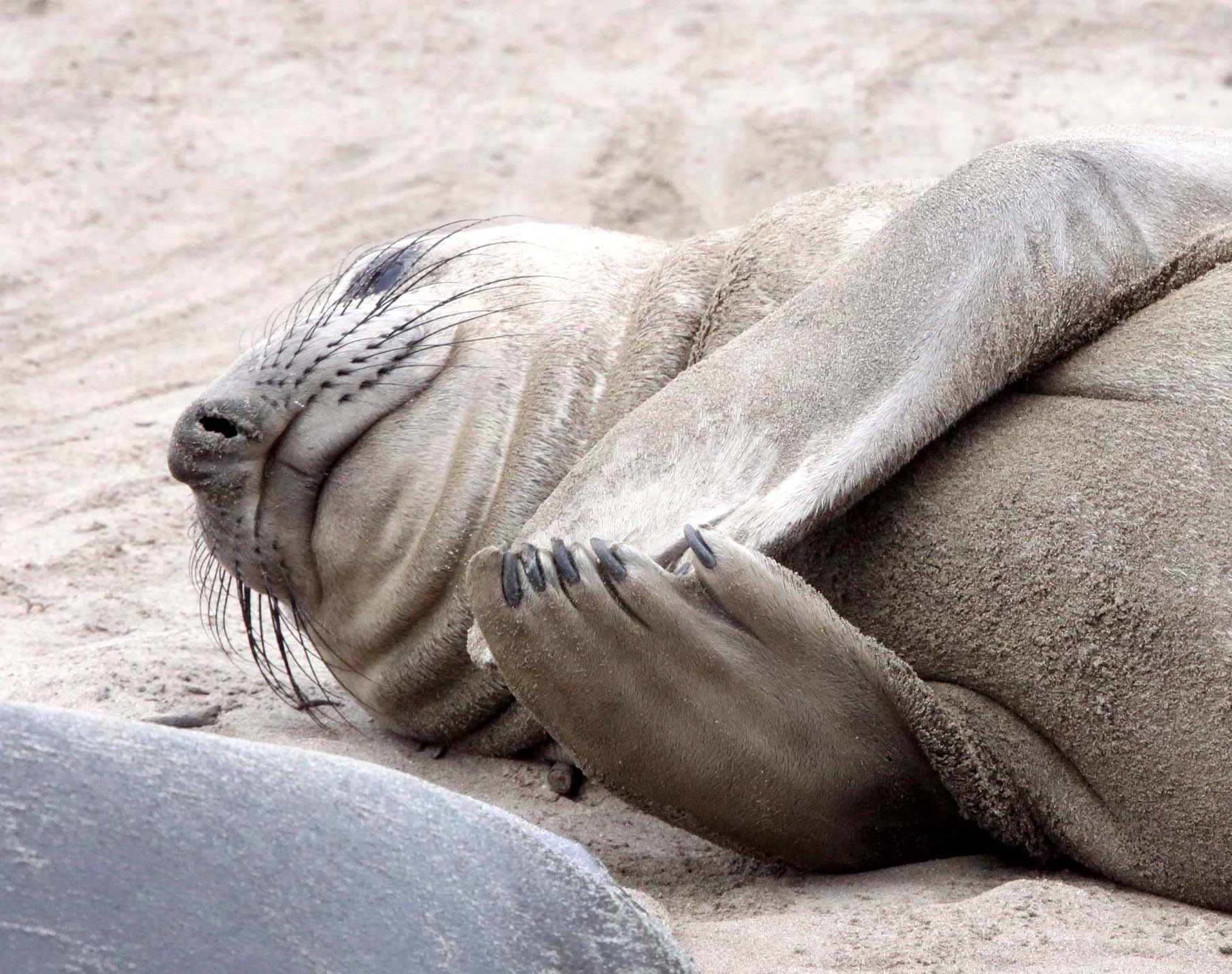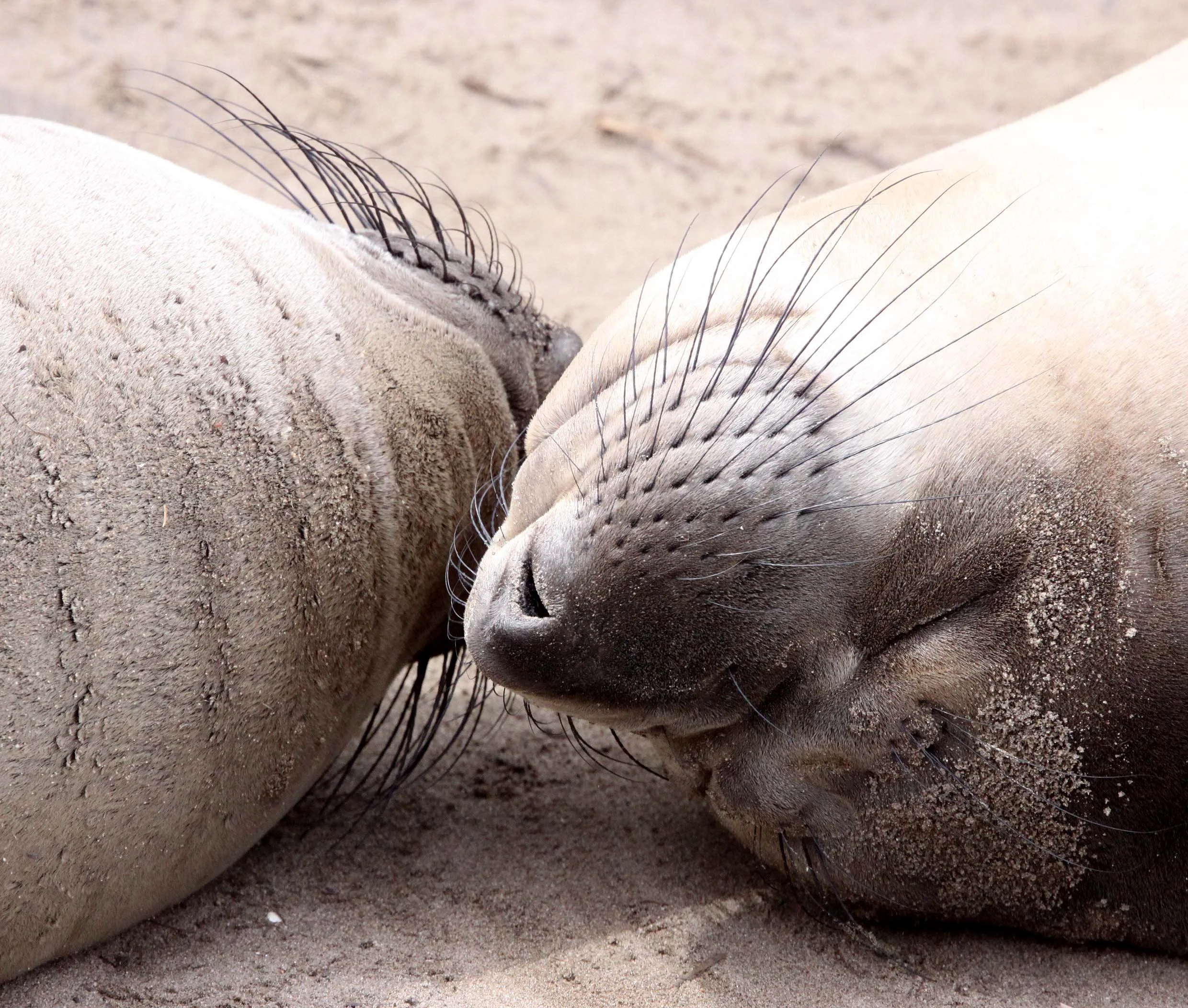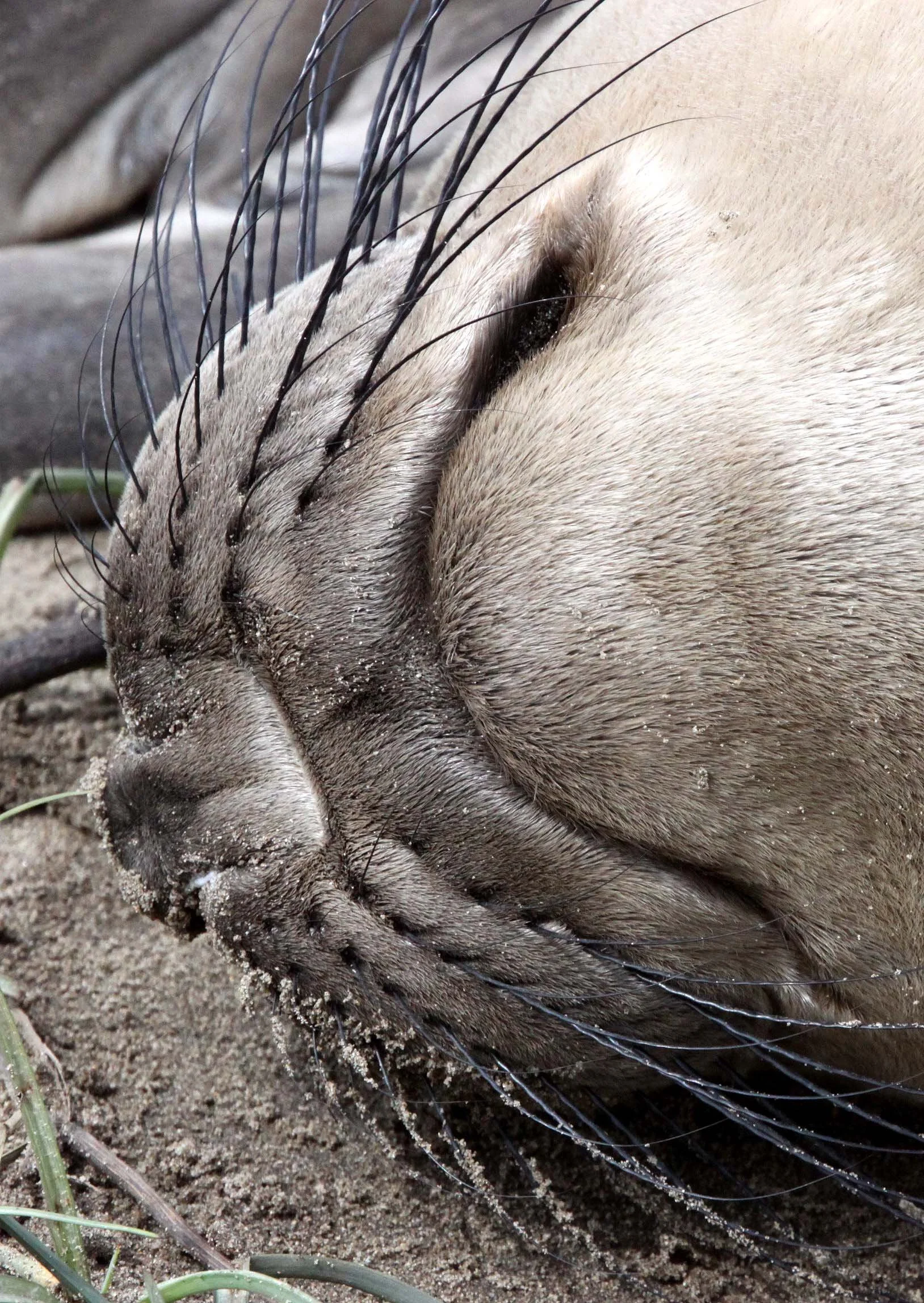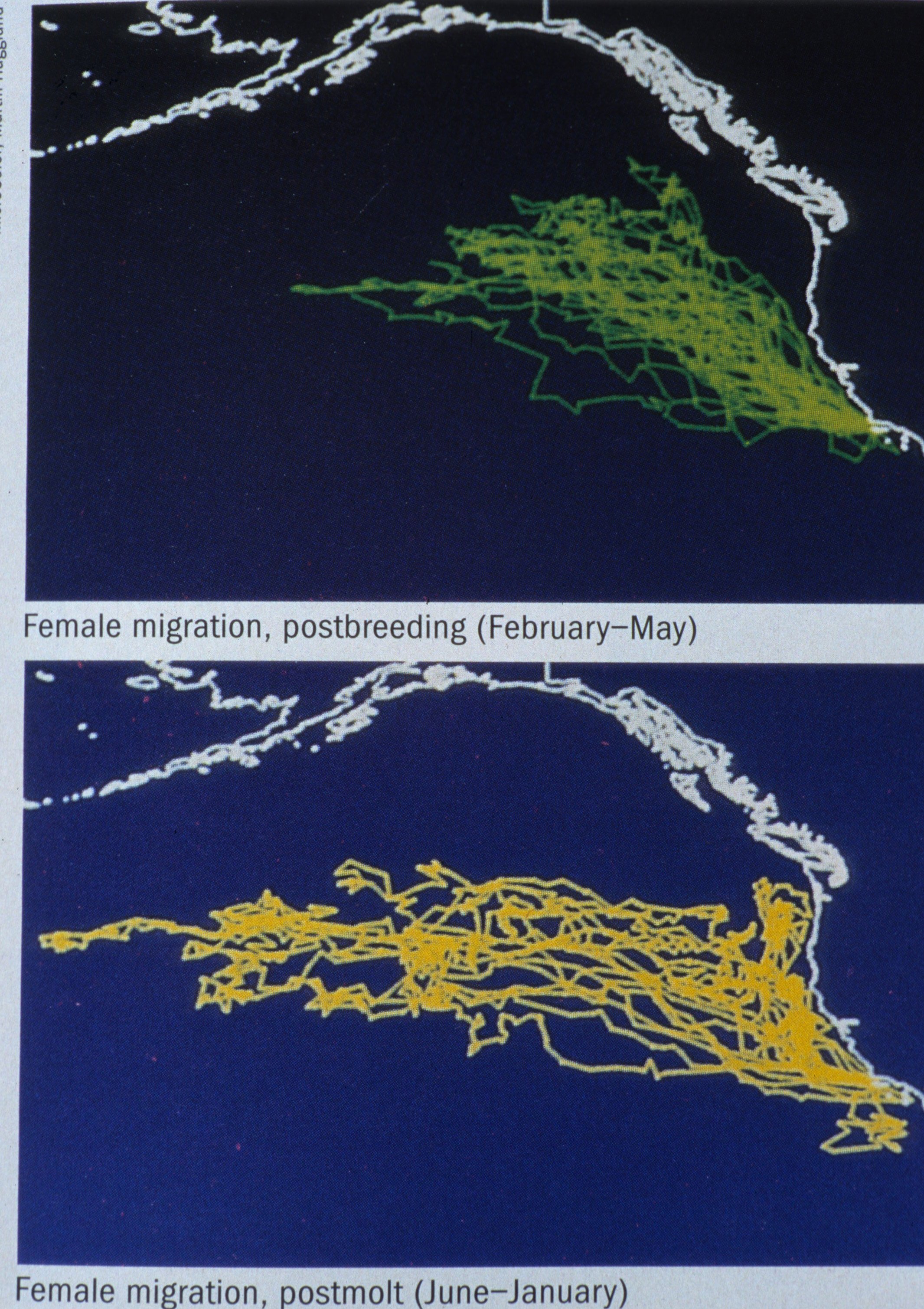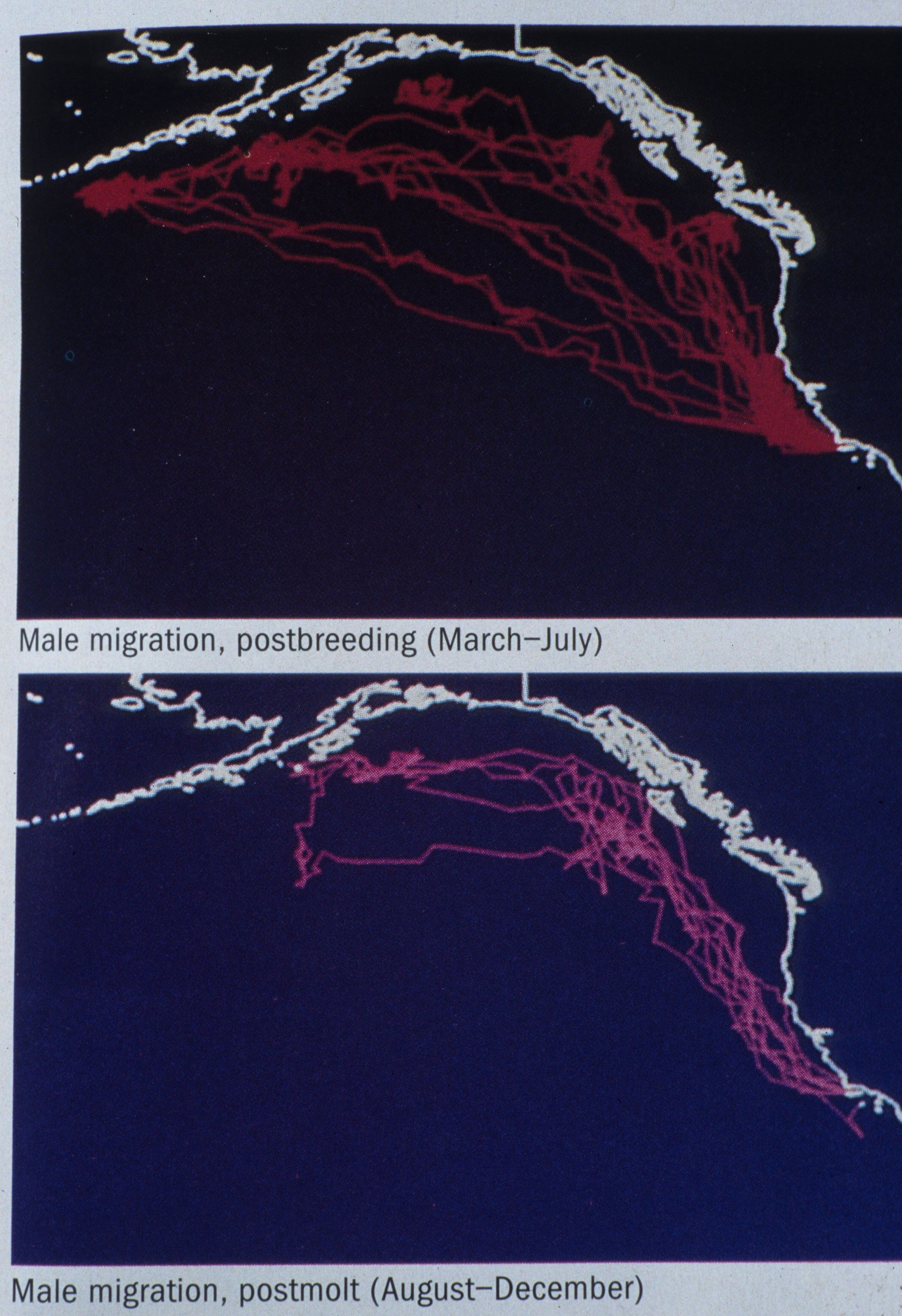
Genus Mirounga The Elephant Seals
Elephant seals are very large, oceangoing earless seals in the genus Mirounga. Both species, the northern elephant seal (M. angustirostris) and the southern elephant seal (M. leonina), were hunted to the brink of extinction for oil by the end of the 19th century, but their numbers have since recovered. They are the largest extant carnivorans, weighing up to 5,000 kilograms (11,000 lb).
Northern Elephant Seal range
The northern elephant seal, somewhat smaller than its southern relative, ranges over the Pacific coast of the U.S., Canada and Mexico. The most northerly breeding location on the Pacific Coast is at Race Rocks, at the southern tip of Vancouver Island in the Strait of Juan de Fuca. The southern elephant seal is found in the Southern Hemisphere on islands such as South Georgia and Macquarie Island, and on the coasts of New Zealand, South Africa, and Argentina in the Peninsula Valdés. In southern Chile, there is a small colony of 120 animals at Jackson Bay, Admiralty Sound (Seno Almirantazgo), Tierra del Fuego.
Elephant seals spend up to 80% of their lives in the ocean. They can hold their breath for more than 100 minutes – longer than any other noncetacean mammal. Elephant seals dive to 1,550 m (5,090 ft) beneath the ocean's surface (the deepest recorded dive of an elephant seal is 2,388 m (7,835 ft) by a southern elephant seal, while the record for the northern elephant seal is 1,735 m (5,692 ft)). The average depth of their dives is about 300 to 600 m (1,000 to 2,000 ft), typically for around 20 minutes for females and 60 minutes for males, as they search for their favorite foods, which are skates, rays, squid, octopuses, eels, small sharks and large fish. Their stomachs also often contain gastroliths. They spend only brief amounts of time at the surface to rest between dives (2–3 minutes). Females tend to dive a bit deeper due to their prey source.
Southern Elephant Seal range
Elephant seals are shielded from extreme cold more by their blubber than by fur. Their hair and outer layers of skin molt in large patches. The skin has to be regrown by blood vessels reaching through the blubber. When molting occurs, the seal is susceptible to the cold, and must rest on land, in a safe place called a "haul out". Northern males and young adults haul out during June to July to molt; northern females and immature seals during April to May.
Elephant seals have a very large volume of blood, allowing them to hold a large amount of oxygen for use when diving. They have large sinuses in their abdomens to hold blood and can also store oxygen in their muscles with increased myoglobin concentrations in muscle. In addition, they have a larger proportion of oxygen-carrying red blood cells. These adaptations allow elephant seals to dive to such depths and remain underwater for up to two hours.
Elephant seals are able to slow down their heartbeat (bradycardia) and divert blood flow from the external areas of the body to important core organs. They can also slow down their metabolism while performing deep dives.
Elephant seals have a helpful feature in their bodies known as the countercurrent heat exchanger to help conserve energy and prevent heat loss. In this system, arteries and veins are organized in a way to maintain a constant body temperature by having the cool blood flowing to the heart warmed by blood going to external areas of the animal.
Milk produced by elephant seals is remarkably high in milkfat compared to other mammals. After an initially lower state, it rises to over 50% milkfat (human breast milk is about 4% milkfat, and cow milk is about 3.5% milkfat).
Elephant seals have large circular eyes that have more rods than cones to help them see in low light conditions when they are diving. These seals also possess a structure called the tapetum lucidum, which helps their vision by having light reflected back to the retina to allow more chances for photoreceptors to detect light.
Their body is covered in blubber, which helps them keep warm and reduce drag while they are swimming. The shape of their body also helps them maneuver well in the water, but limits their movement on land. Also, elephant seals have the ability to fast for long periods of time while breeding or molting. The turbinate process, another unique adaptation, is very beneficial when these seals are fasting, breeding, molting, or hauling out. This unique nasal structure recycles moisture when they breathe and helps prevent water loss.
Elephant seals have external whiskers called vibrissae to help them locate prey and navigate their environment. The vibrissae are connected to blood vessels, nerves, and muscles making them an important sensing tool.
Due to evolutionary changes, their ear has been modified to work extremely well underwater. The structure of the inner ear helps amplify incoming sounds, and allows these seals to have good directional hearing due to the isolation of the inner ear. In addition to these adaptations, tissues in the ear canal allow the pressure in the ear to be adjusted while these seals perform their deep dives.
Southern Elephant Seal (Mirounga leonina) - Antarctic Peninsula colony
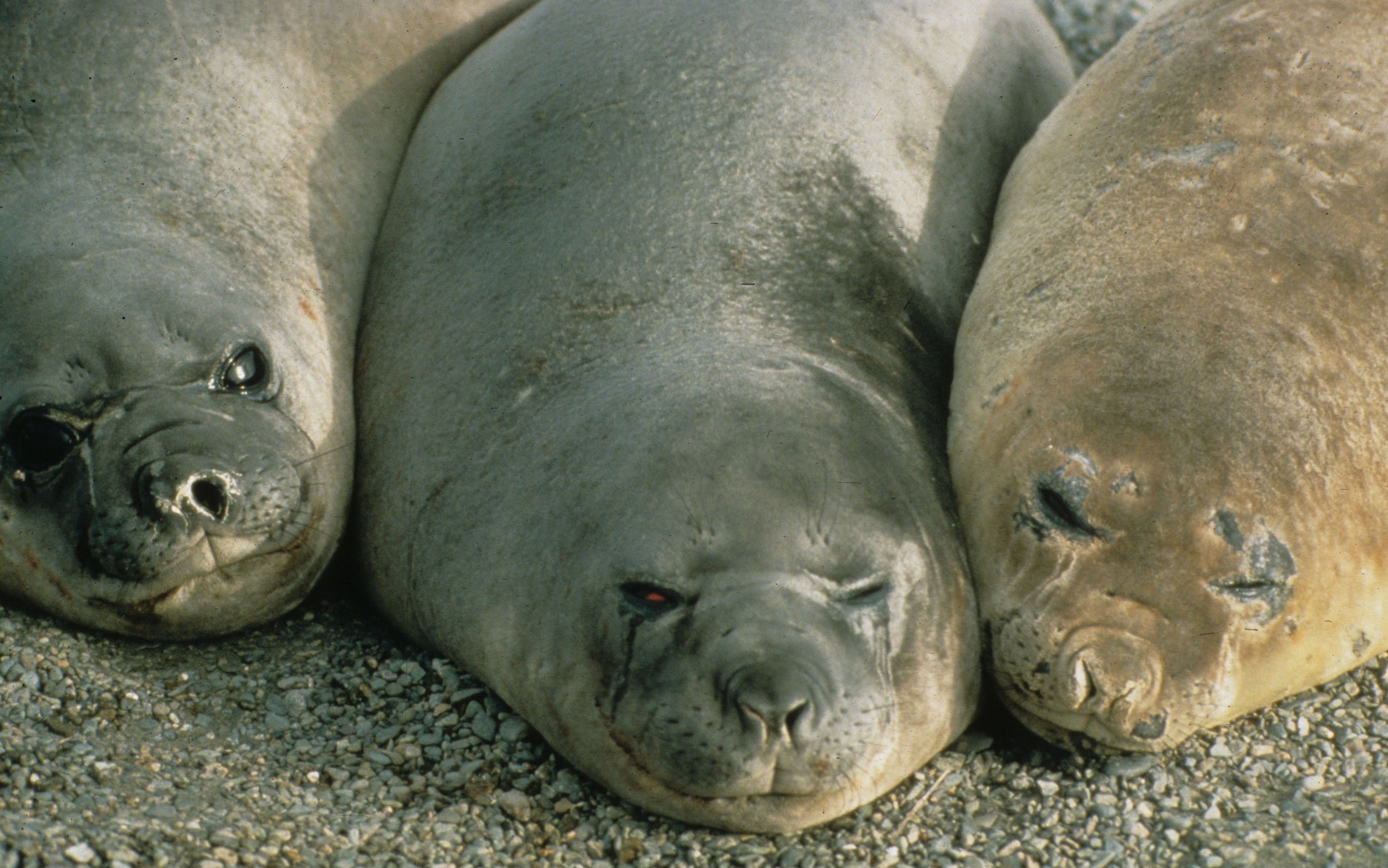
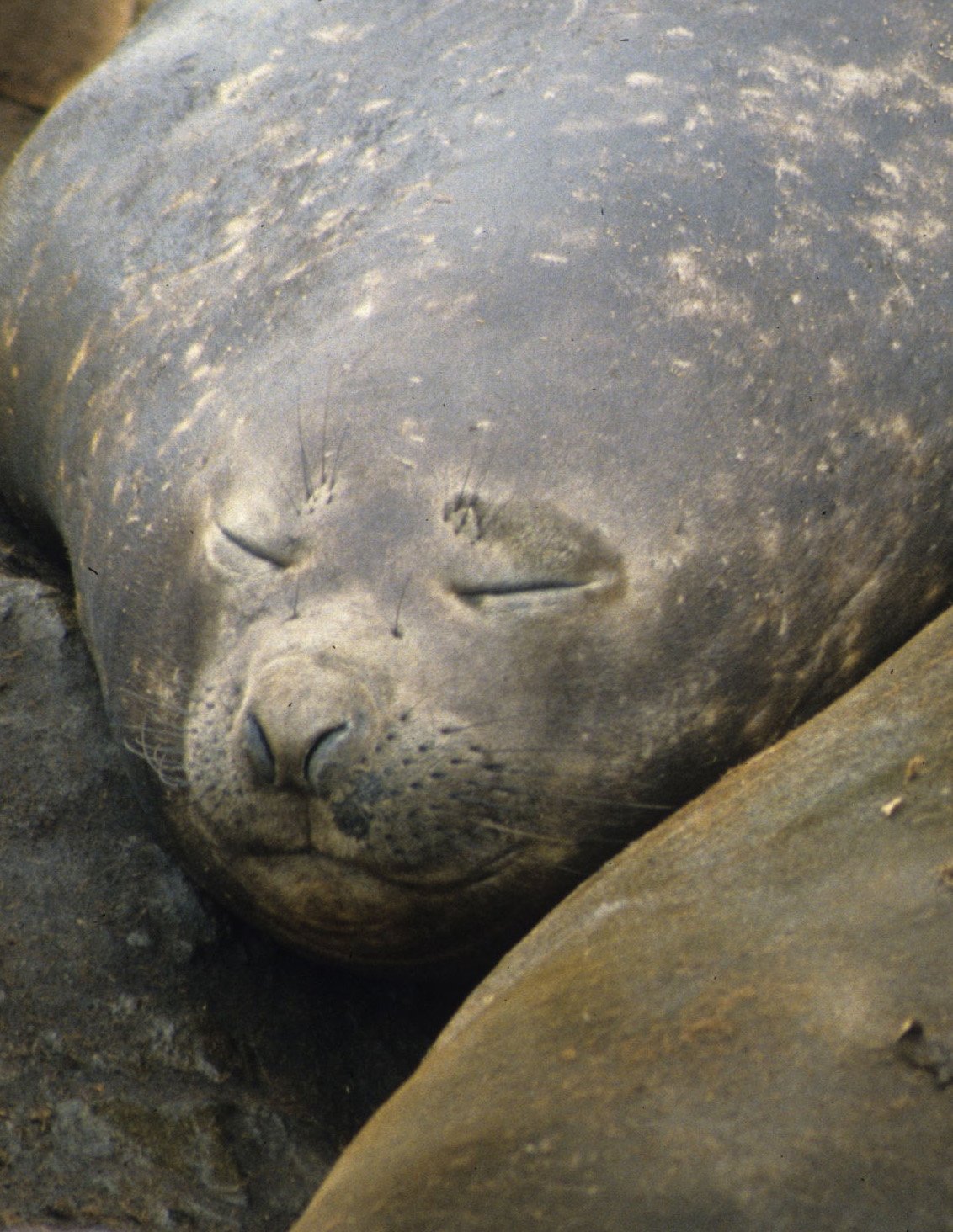

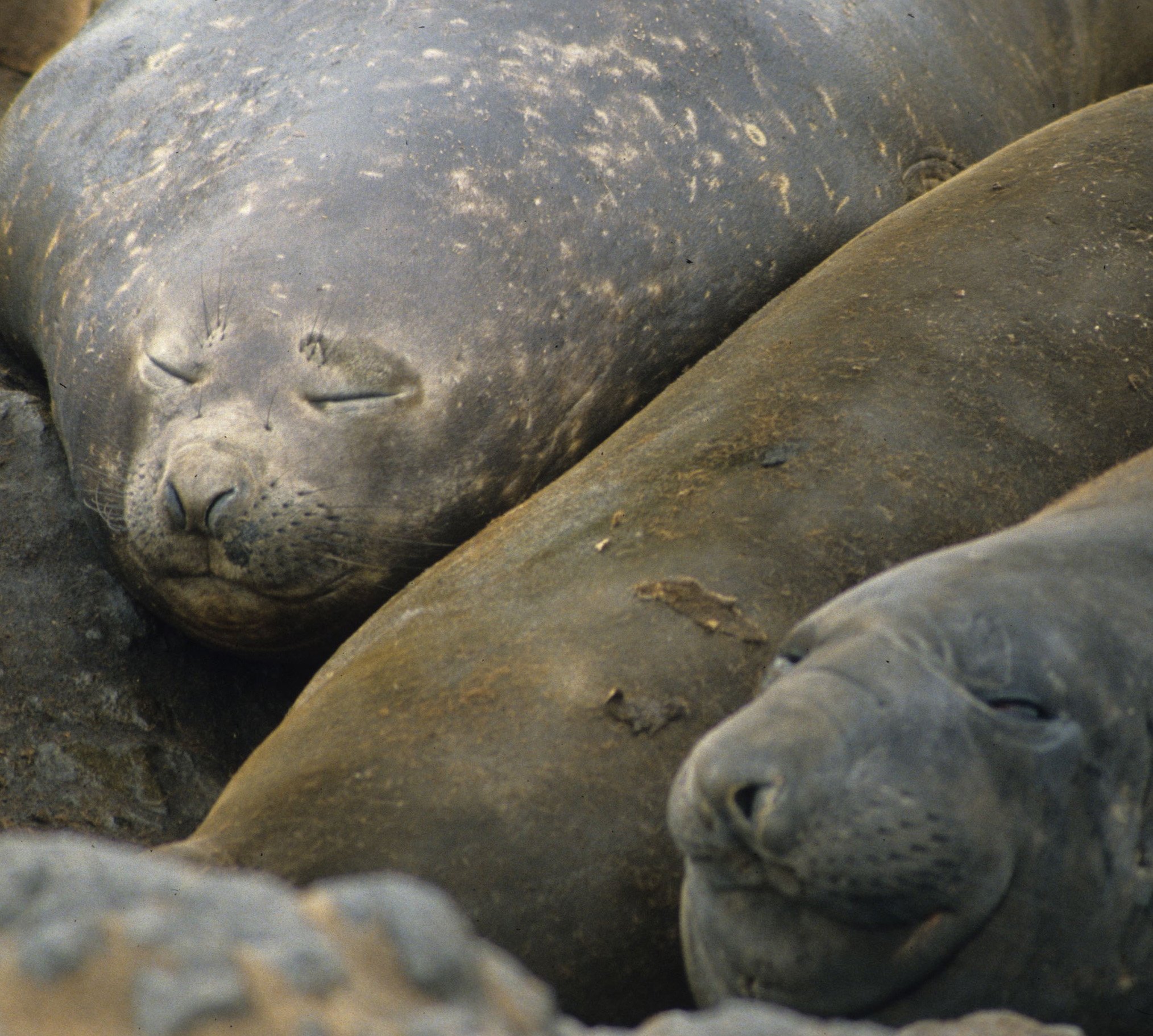
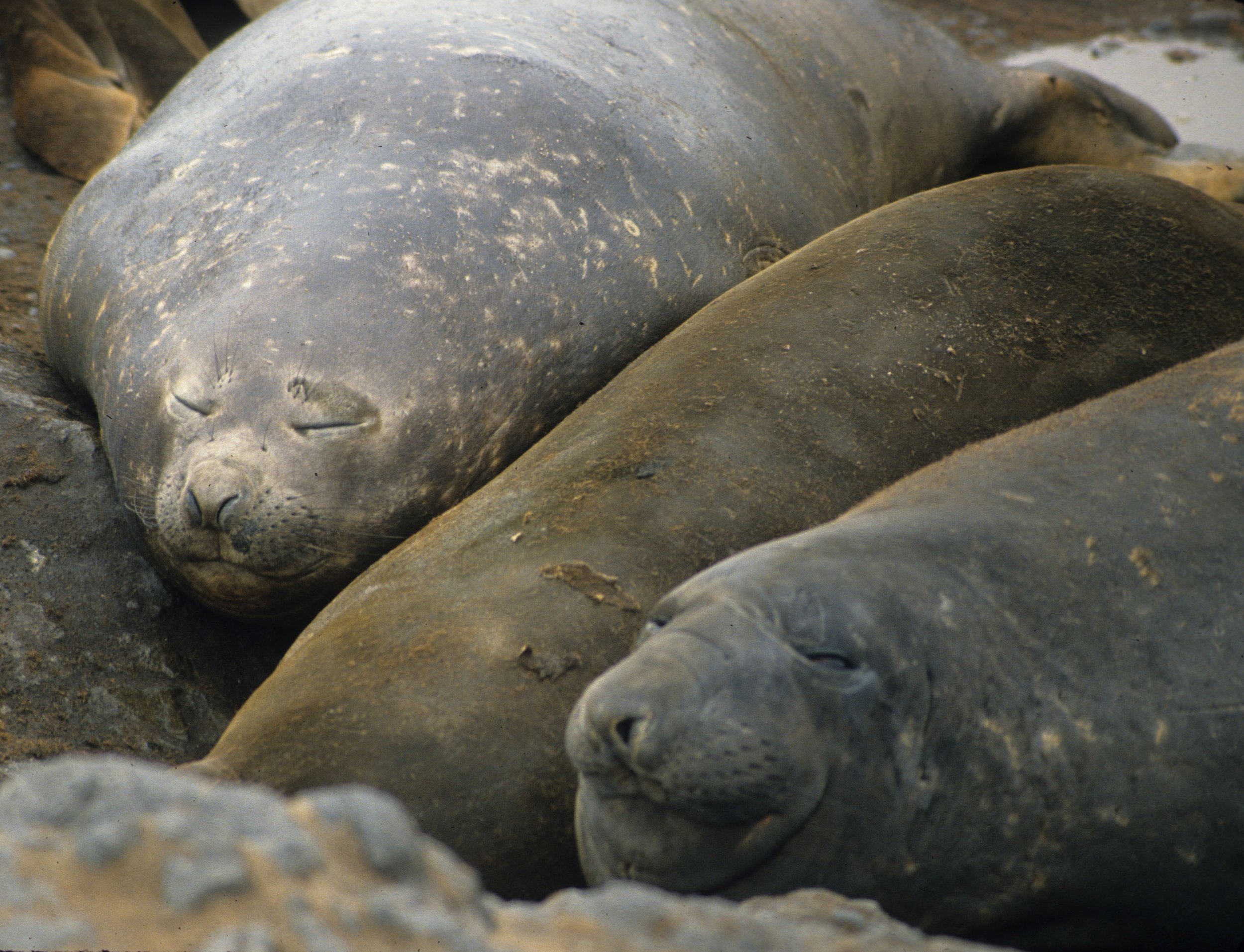
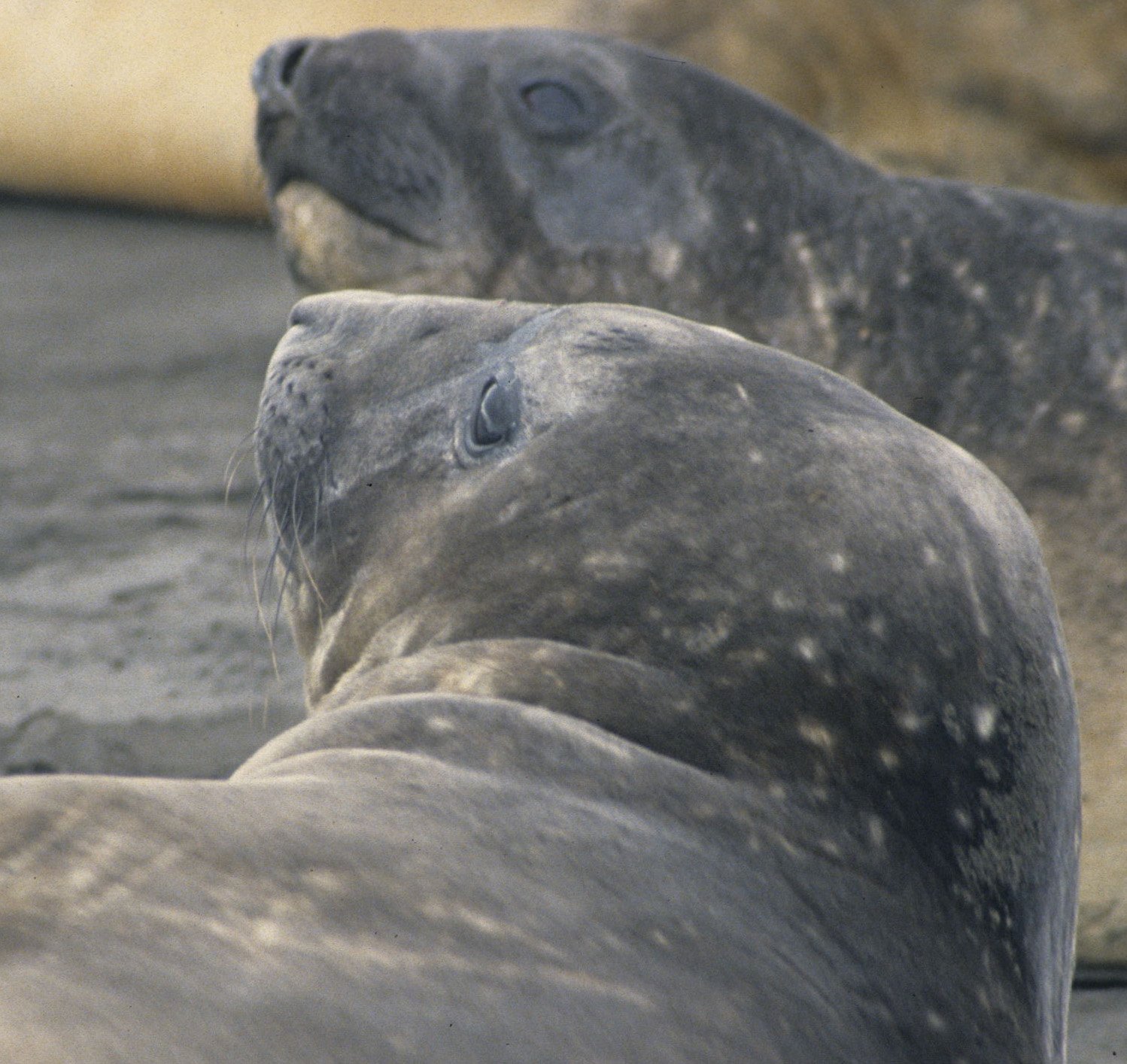
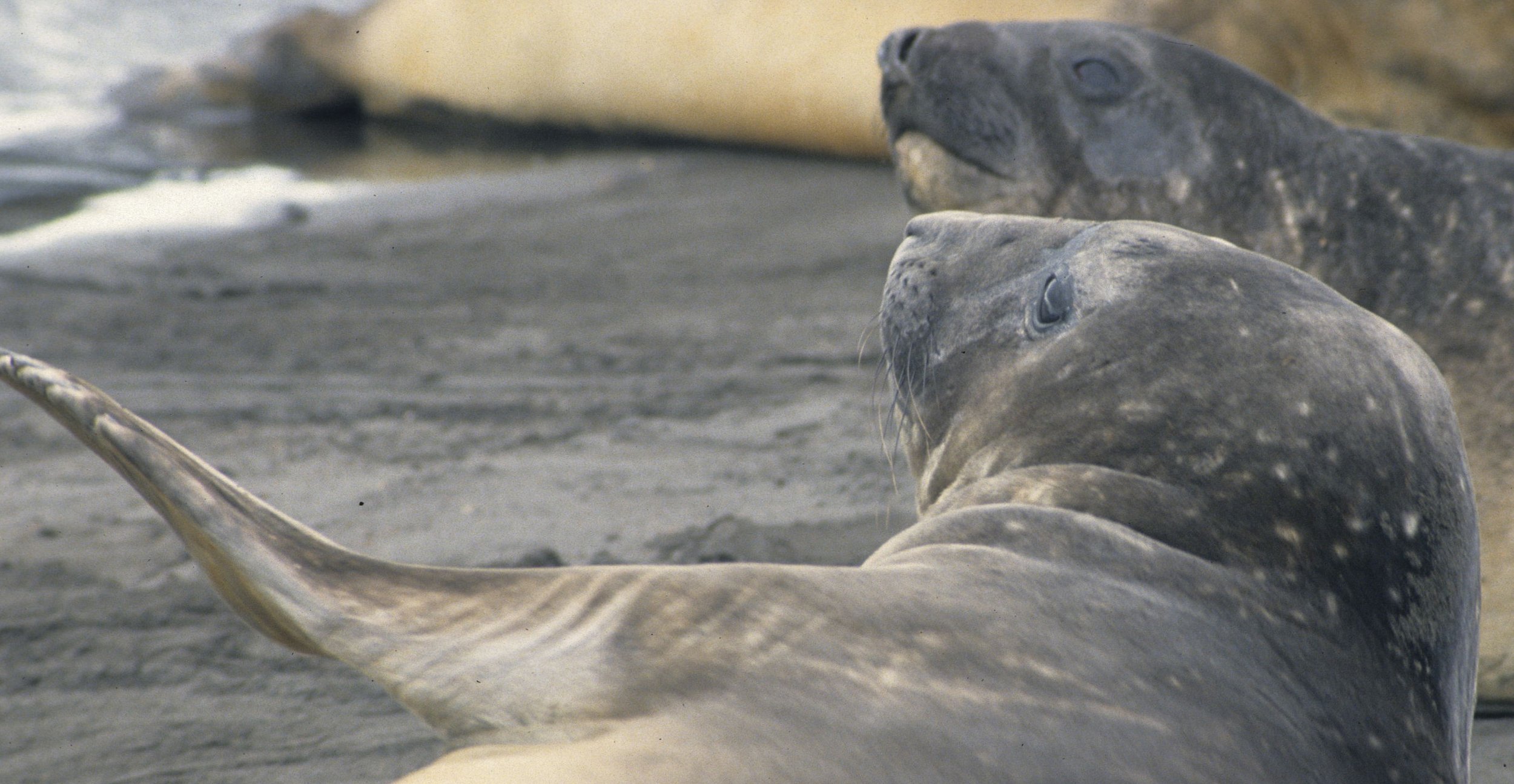
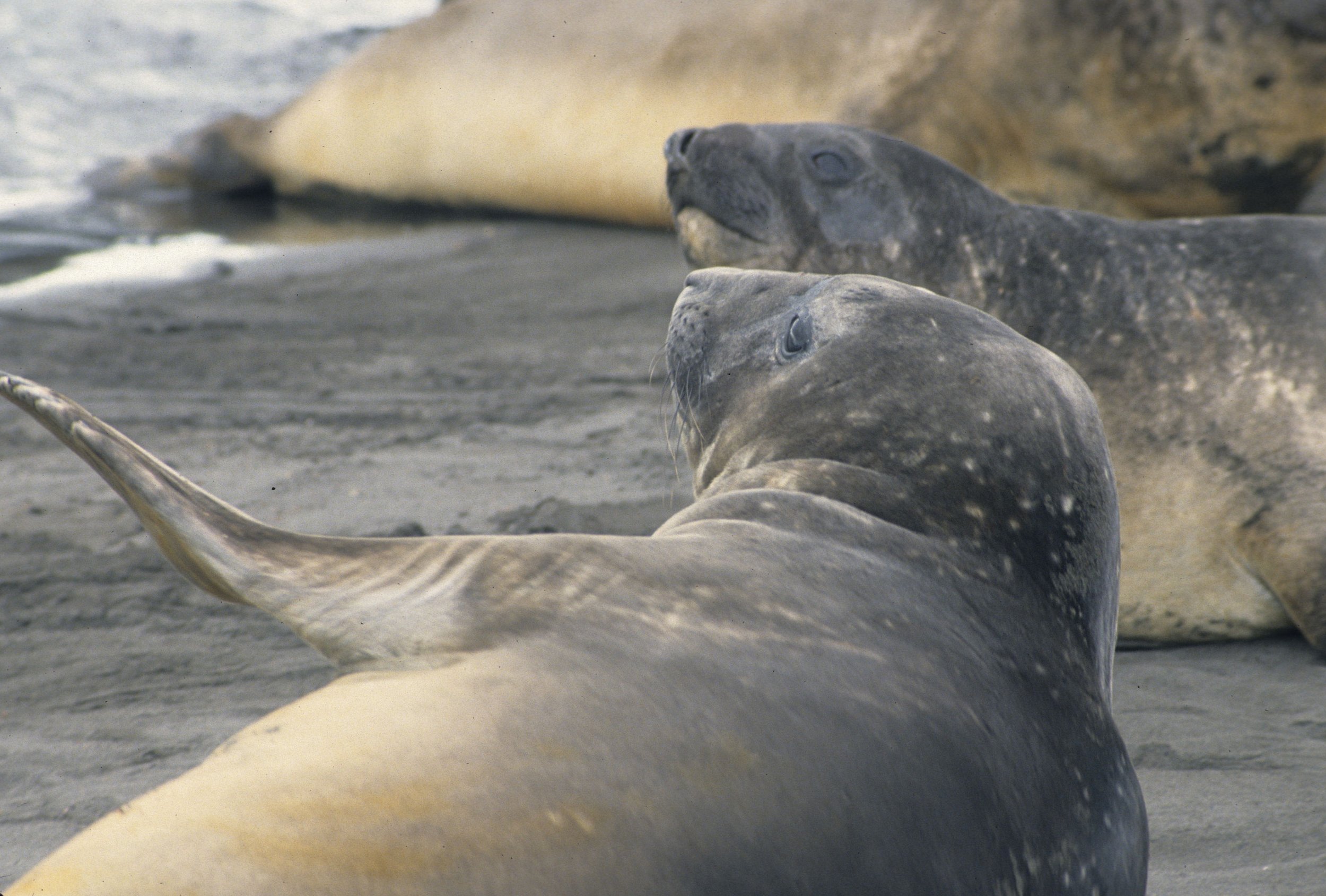
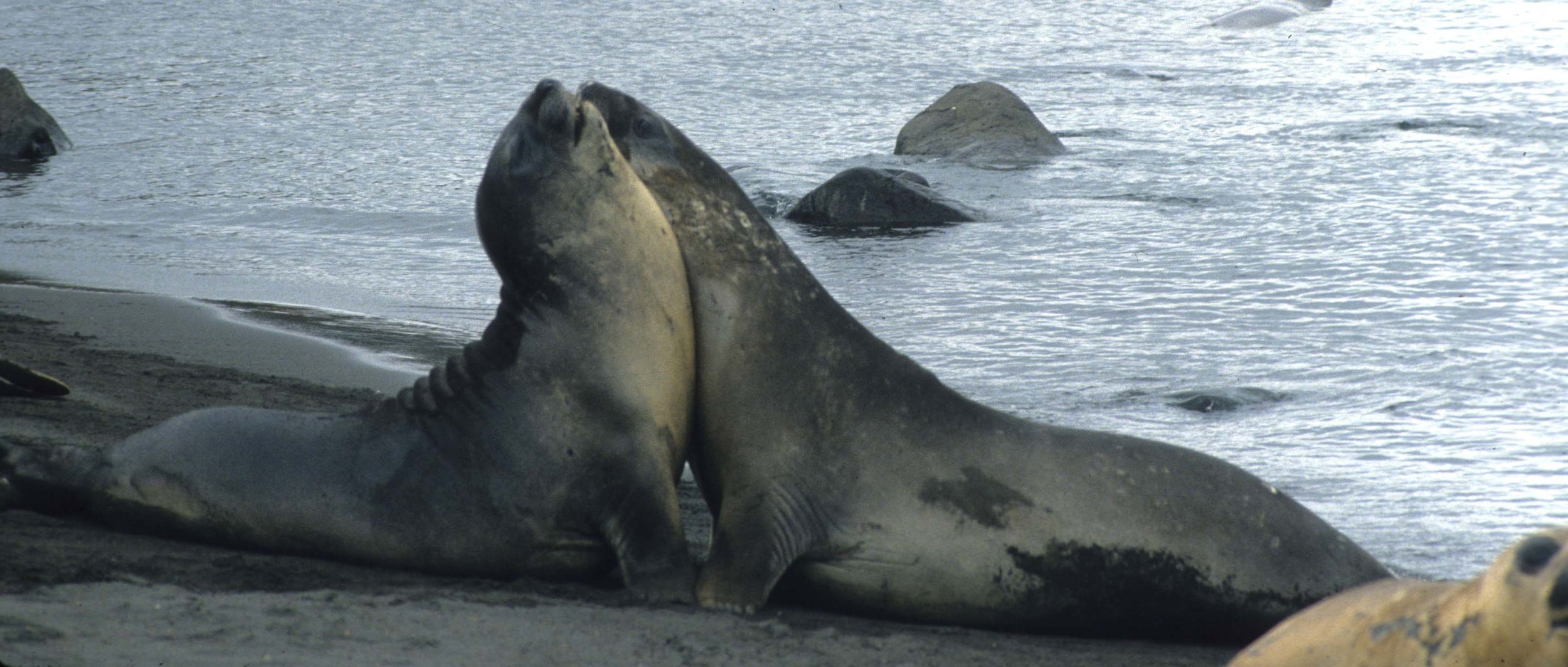
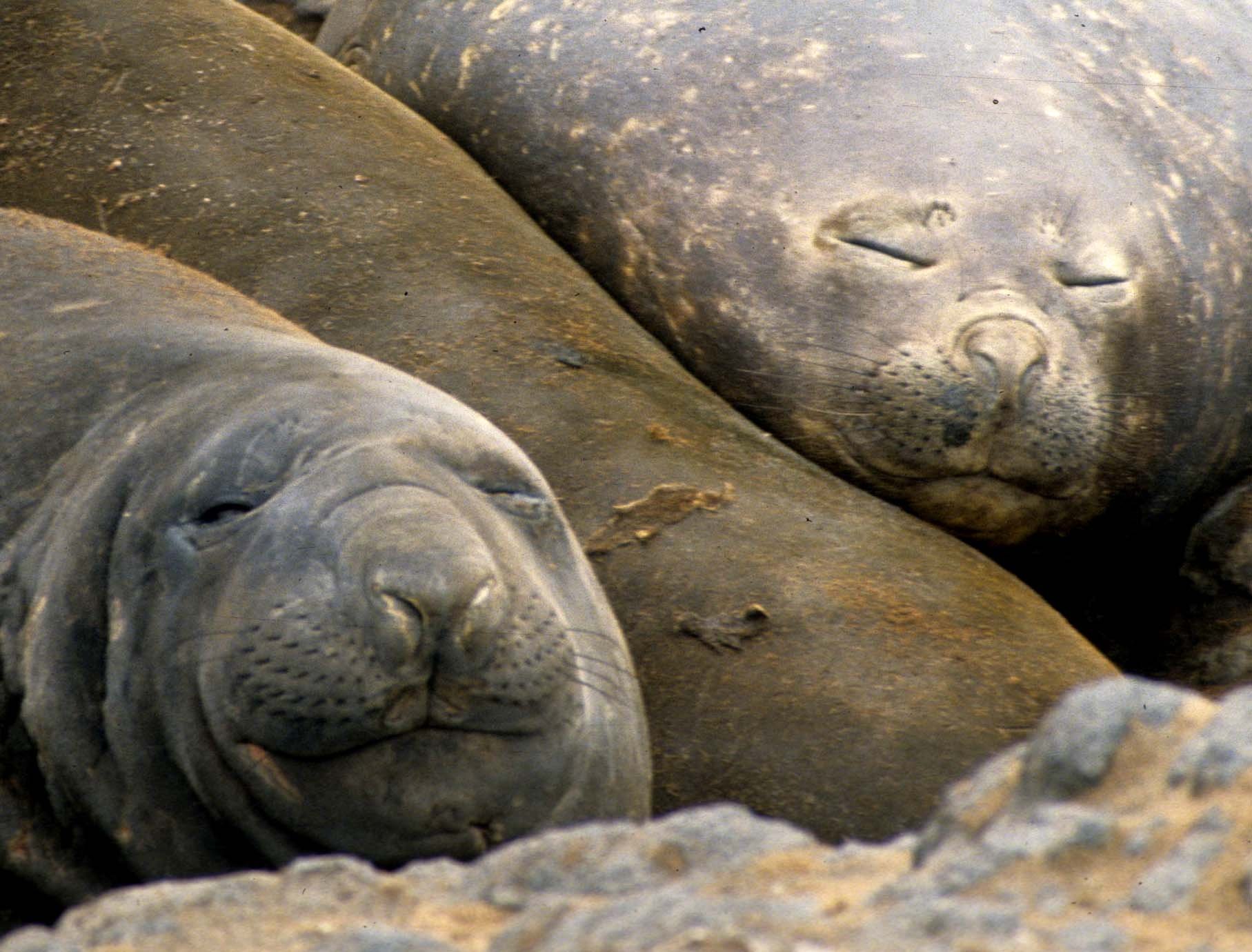
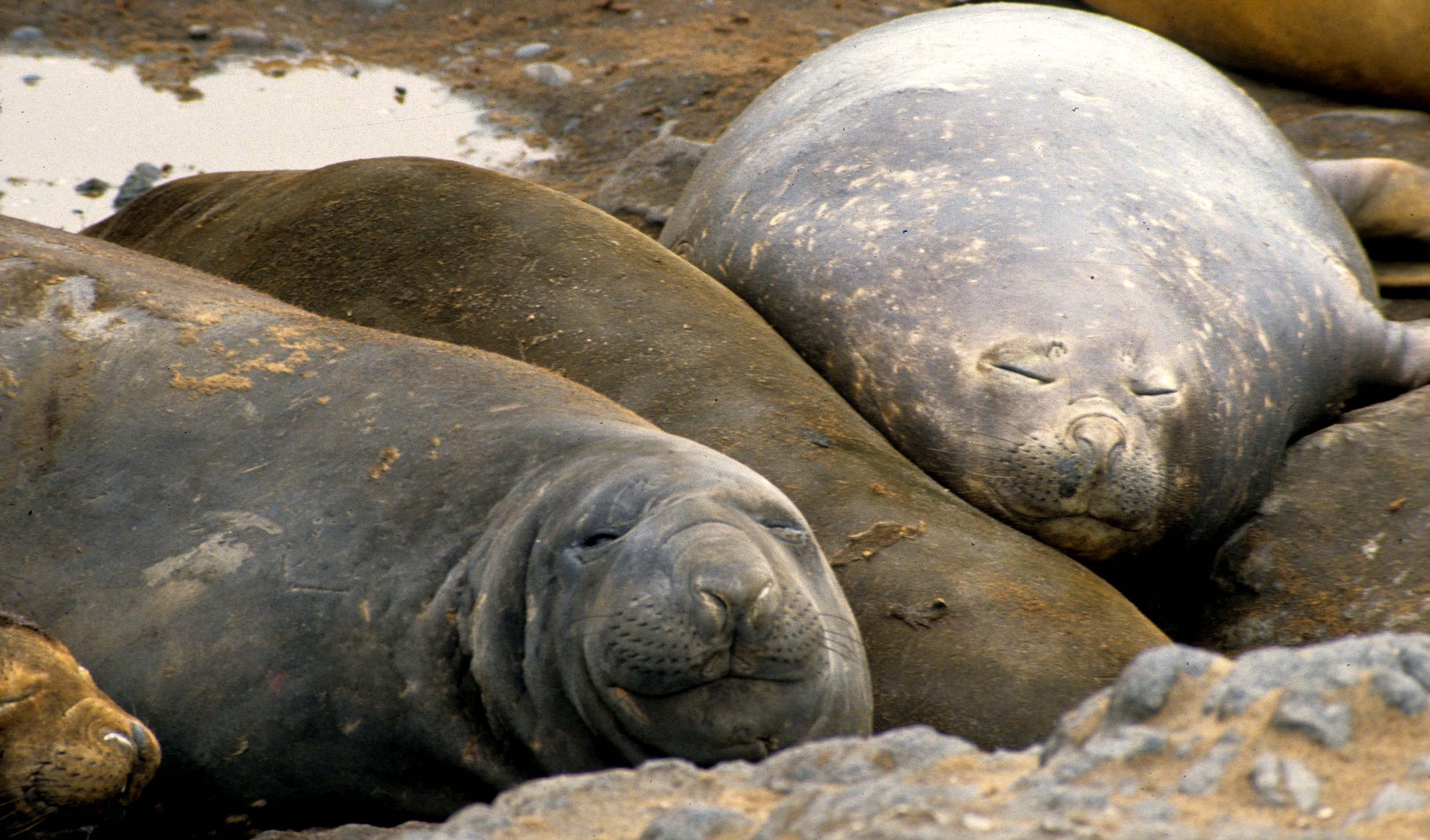
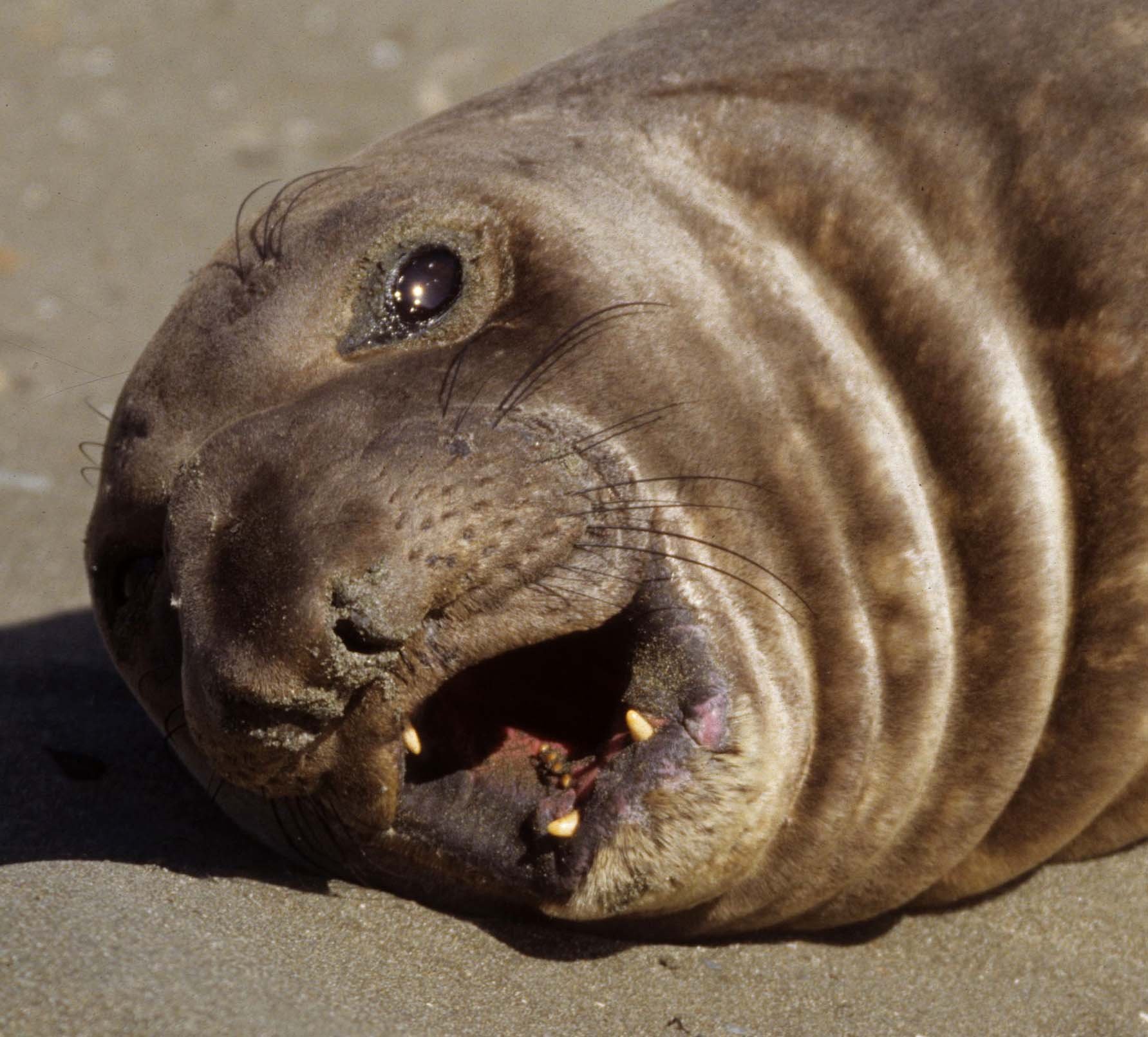
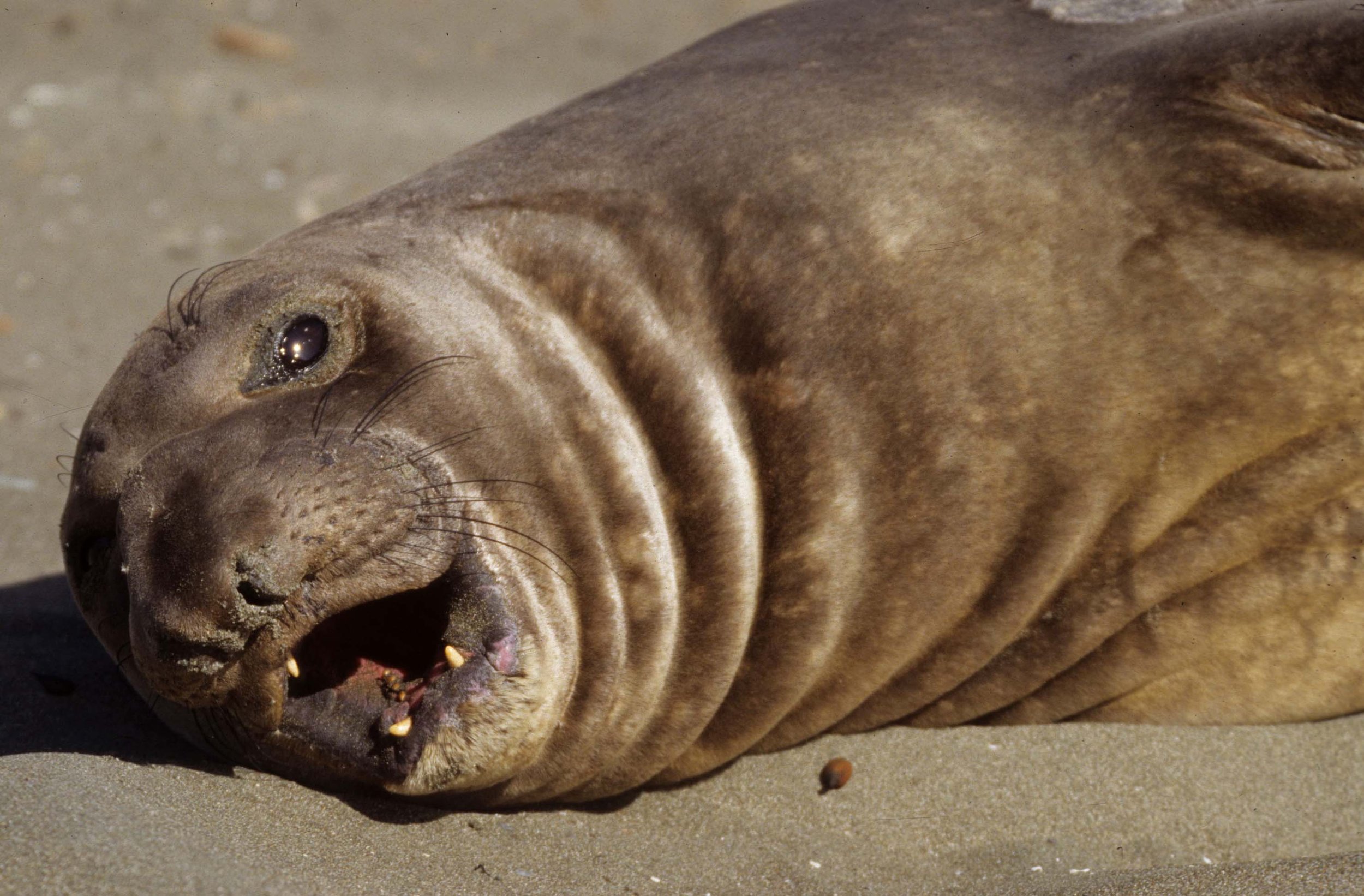

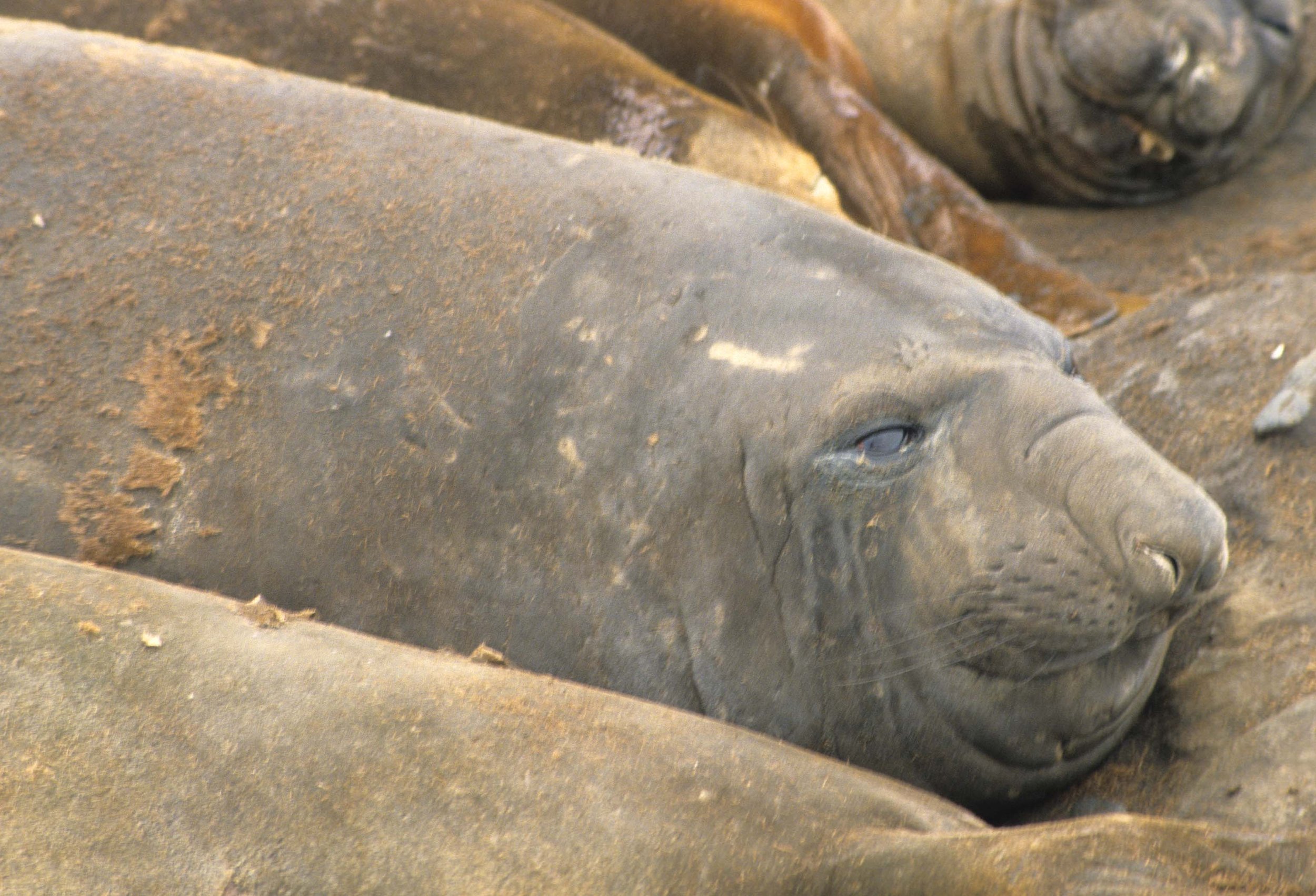

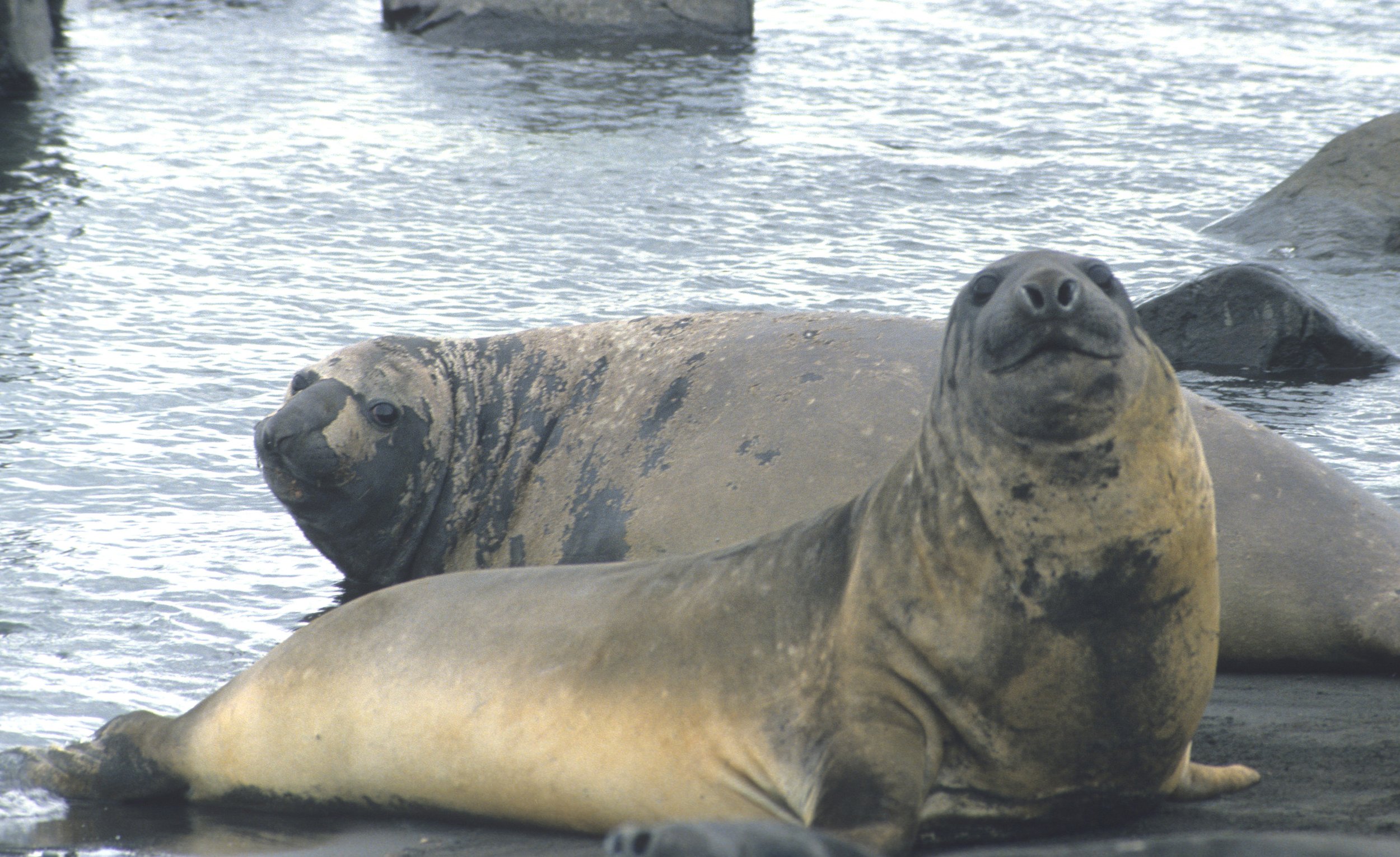
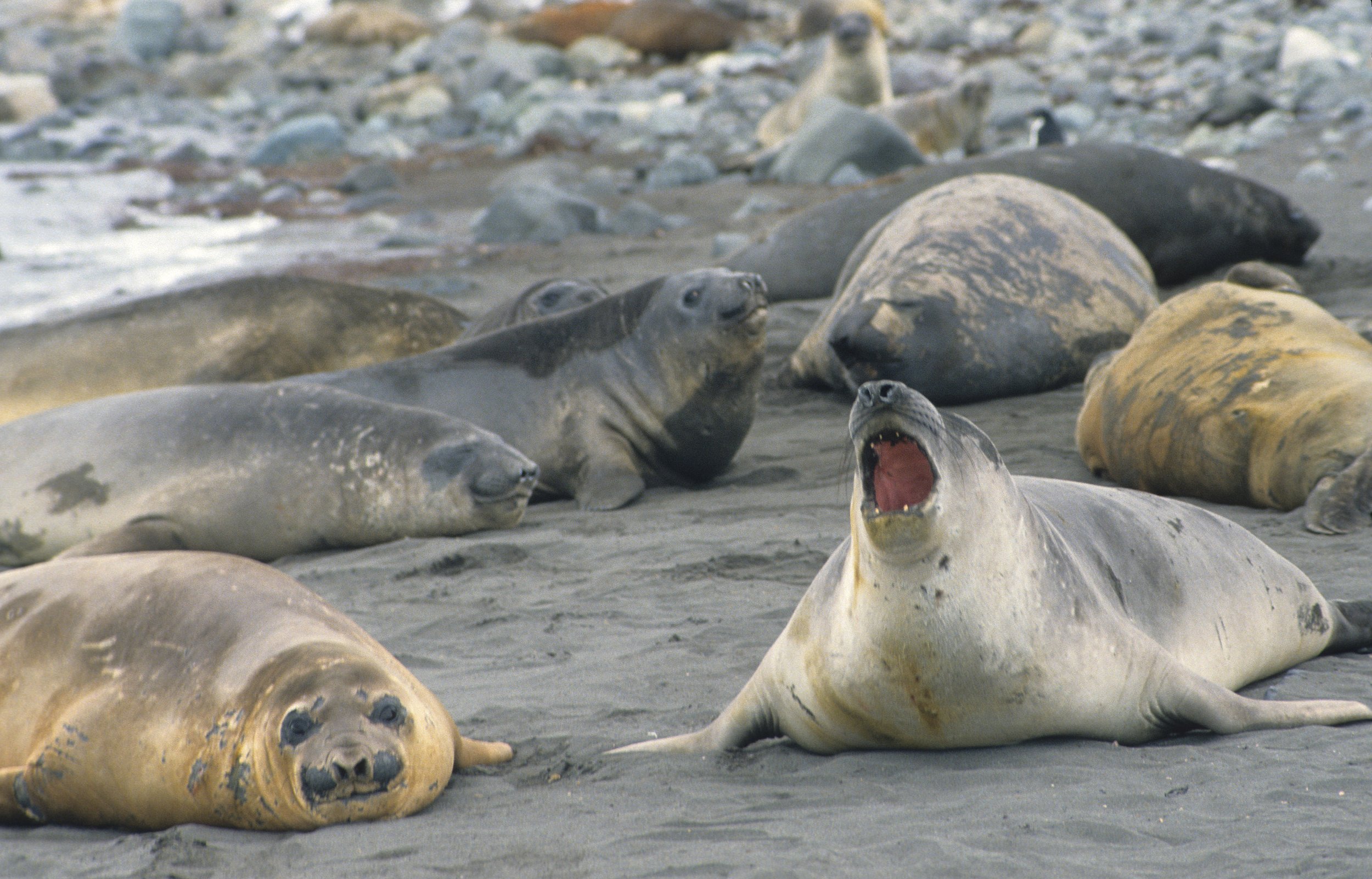

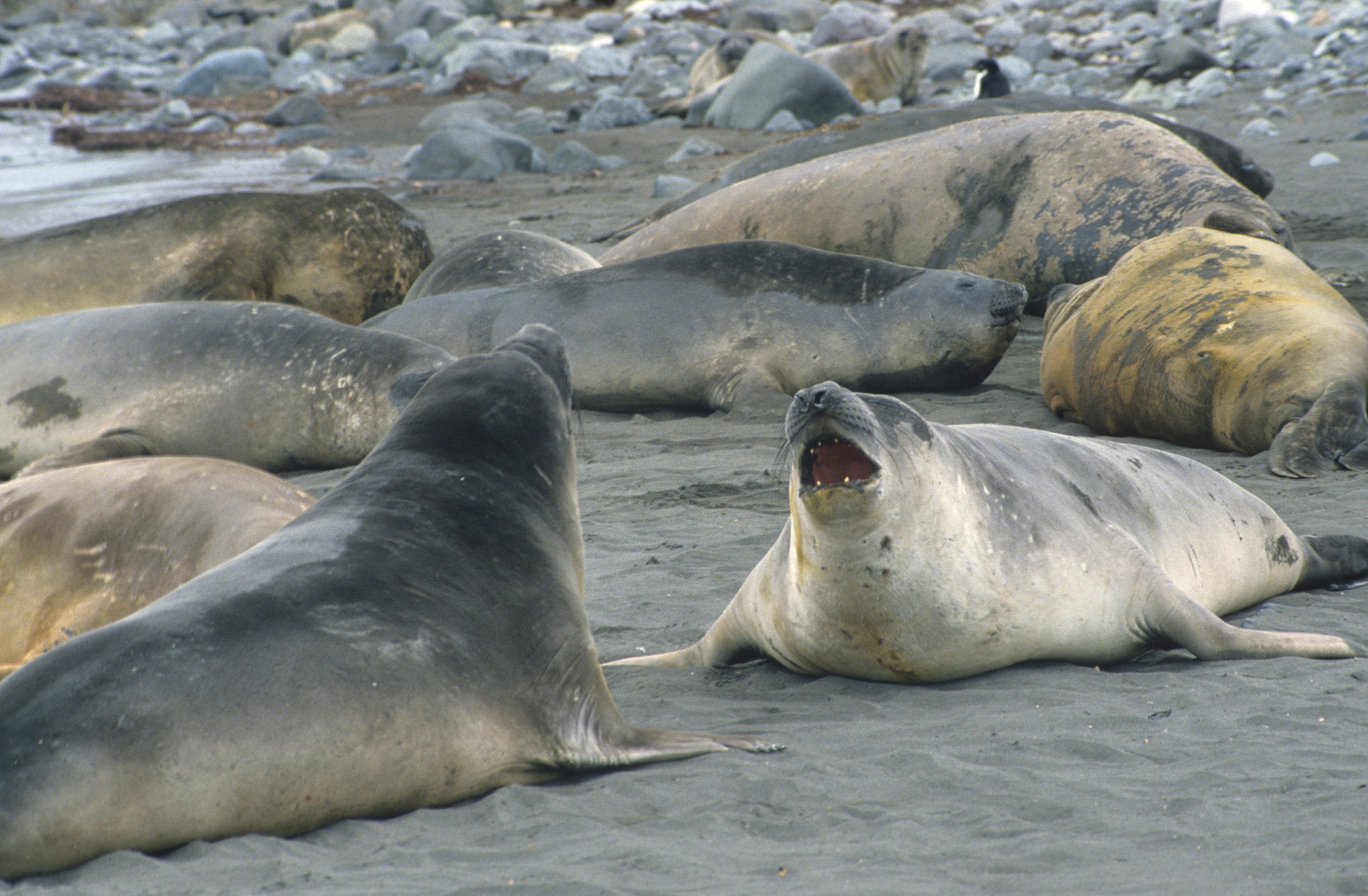
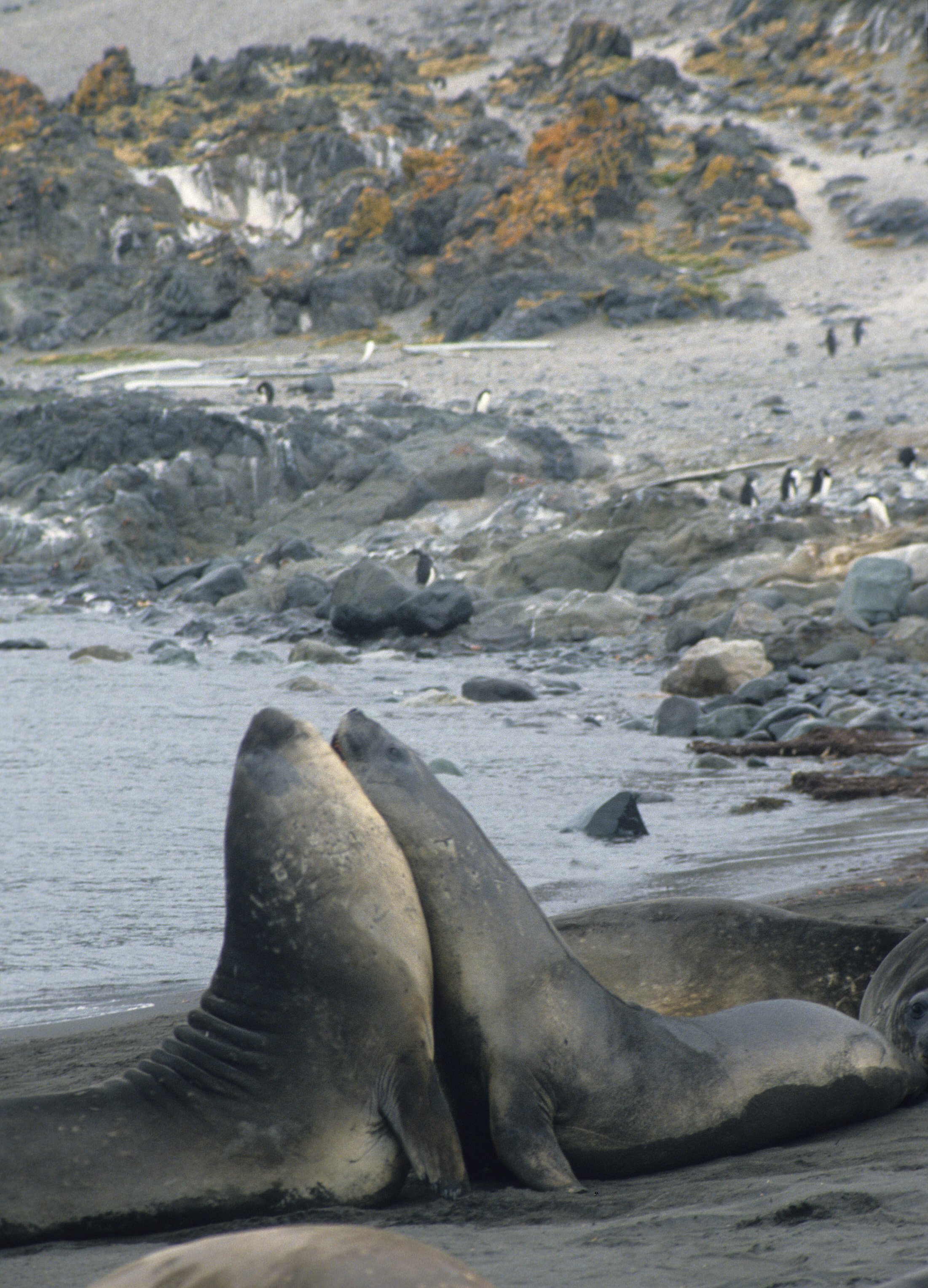
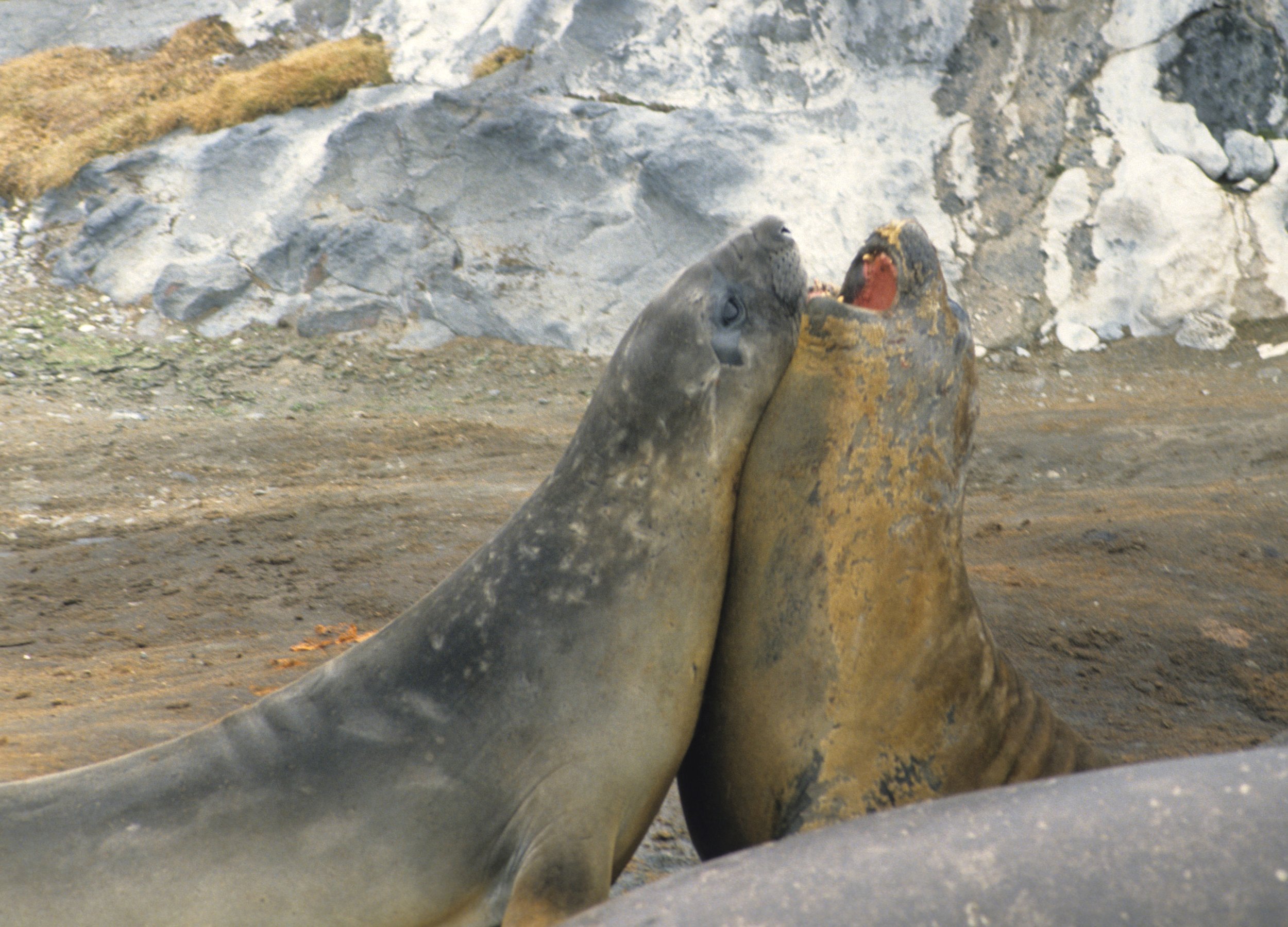
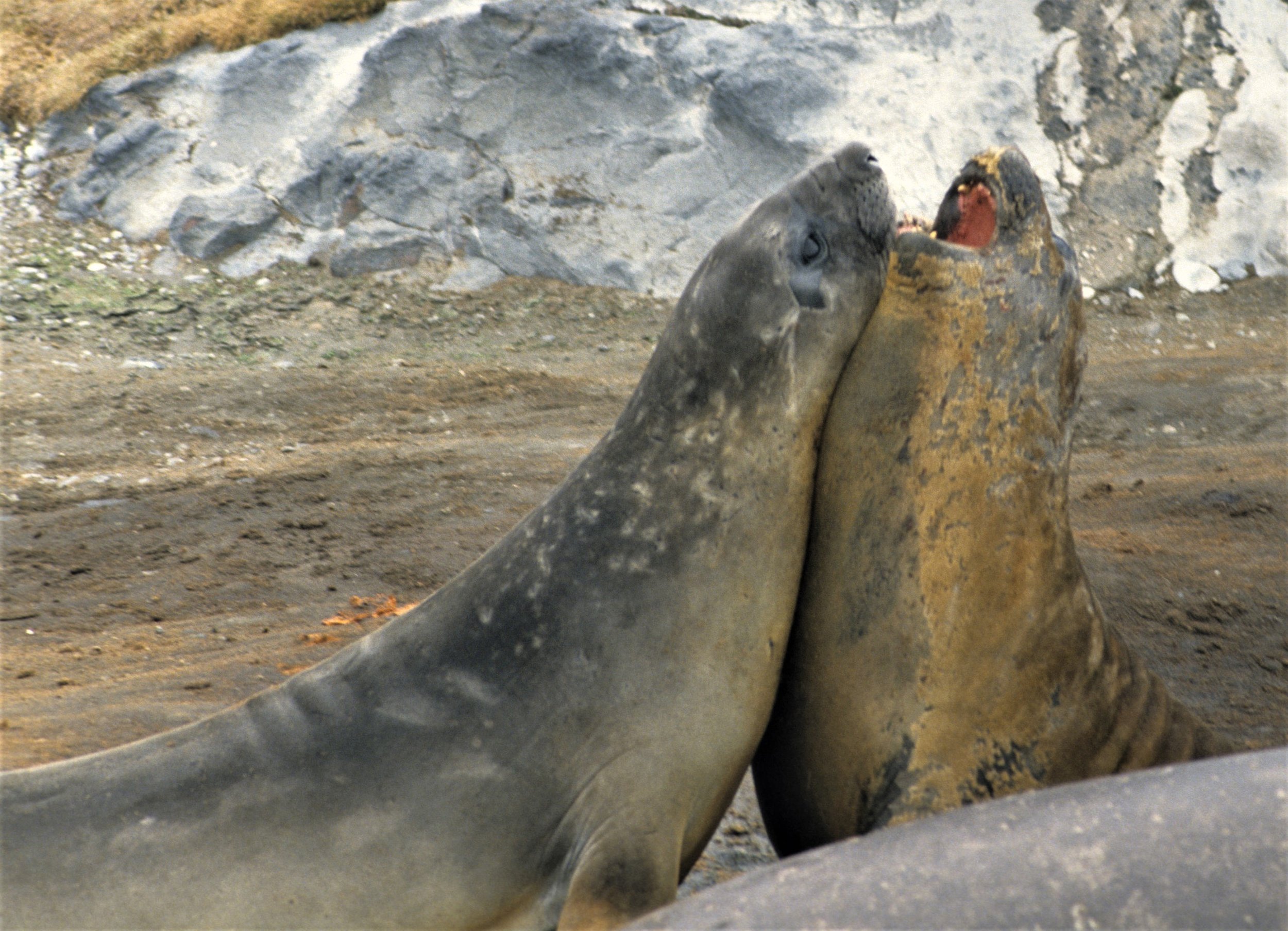
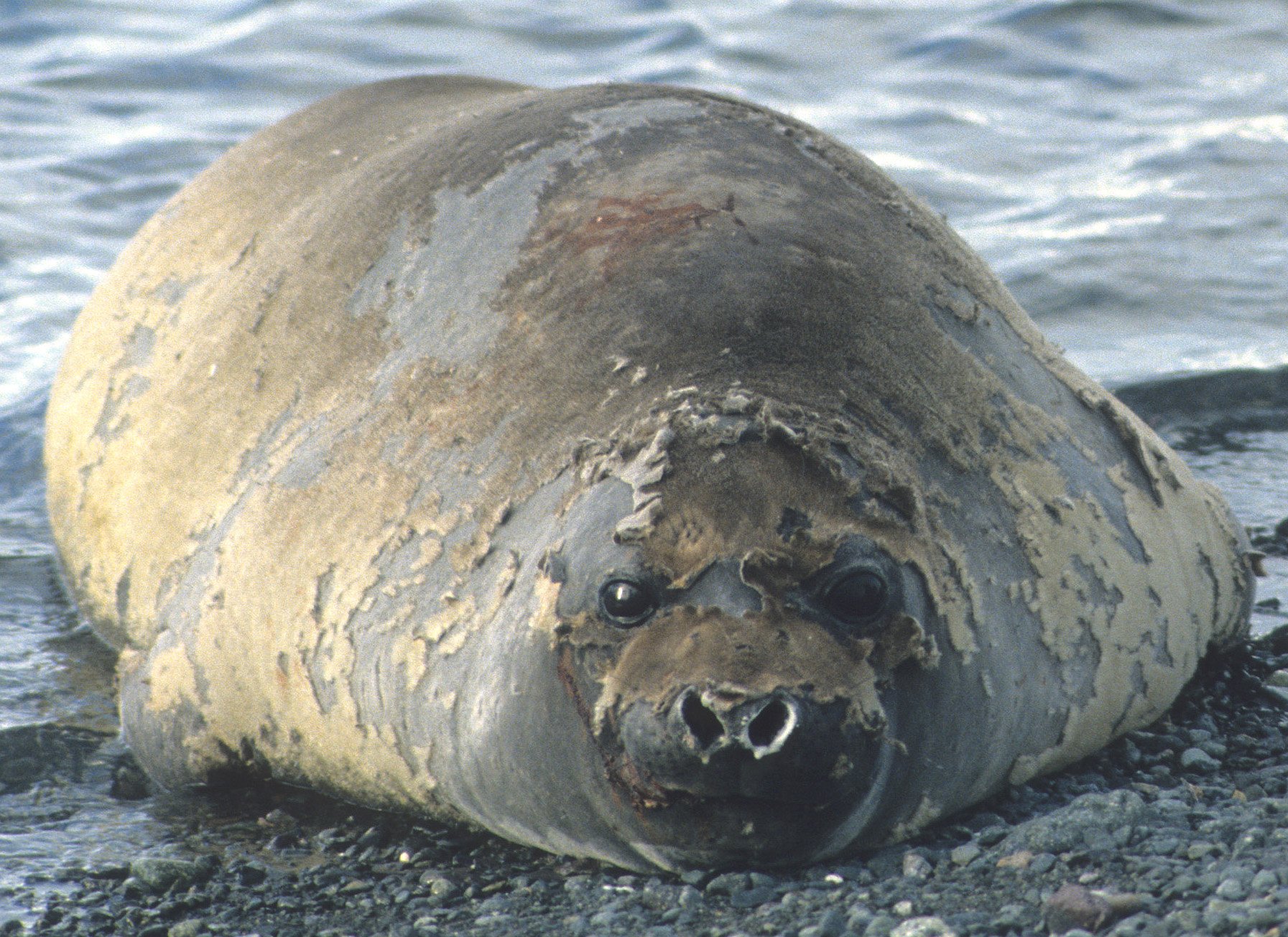
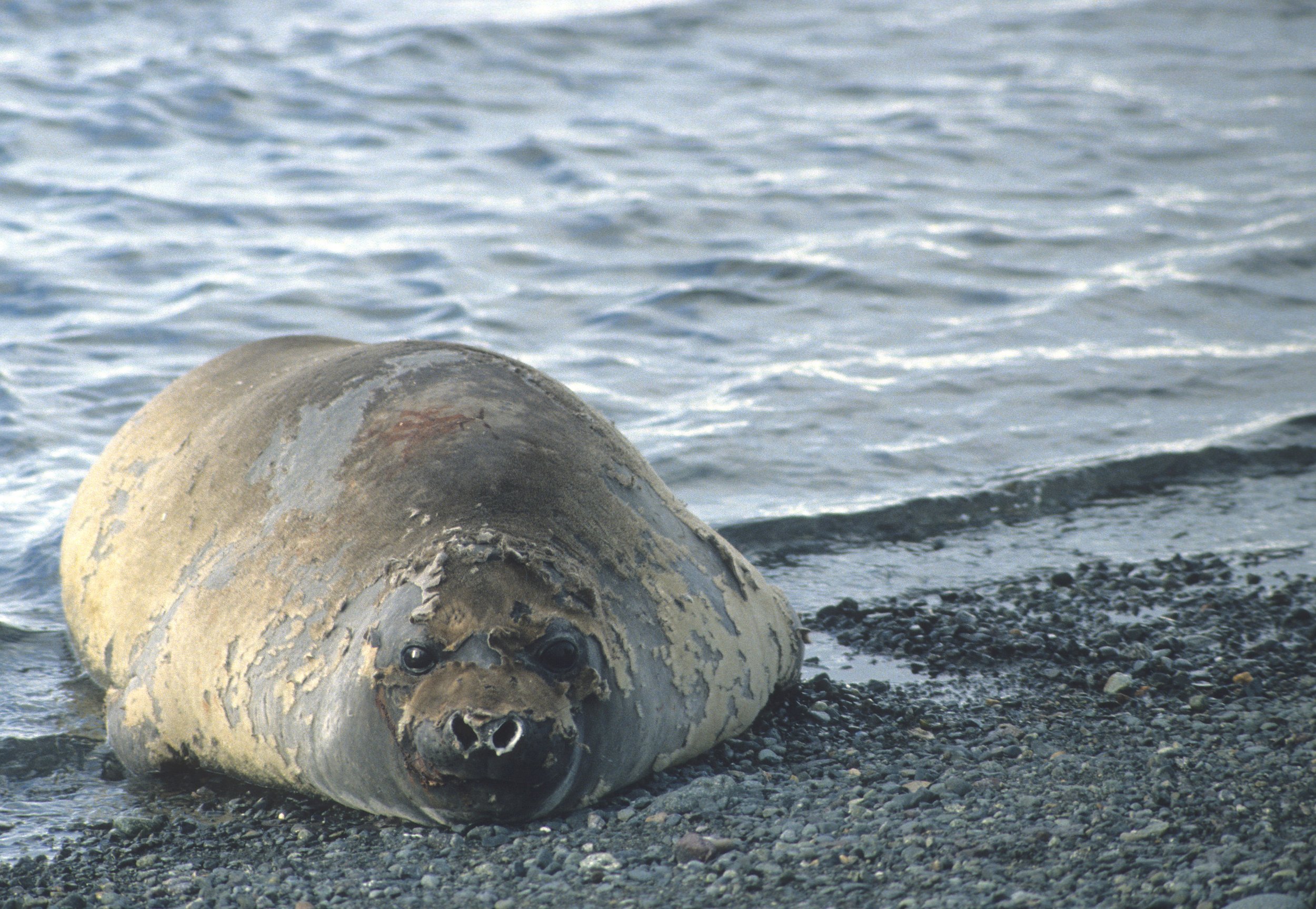



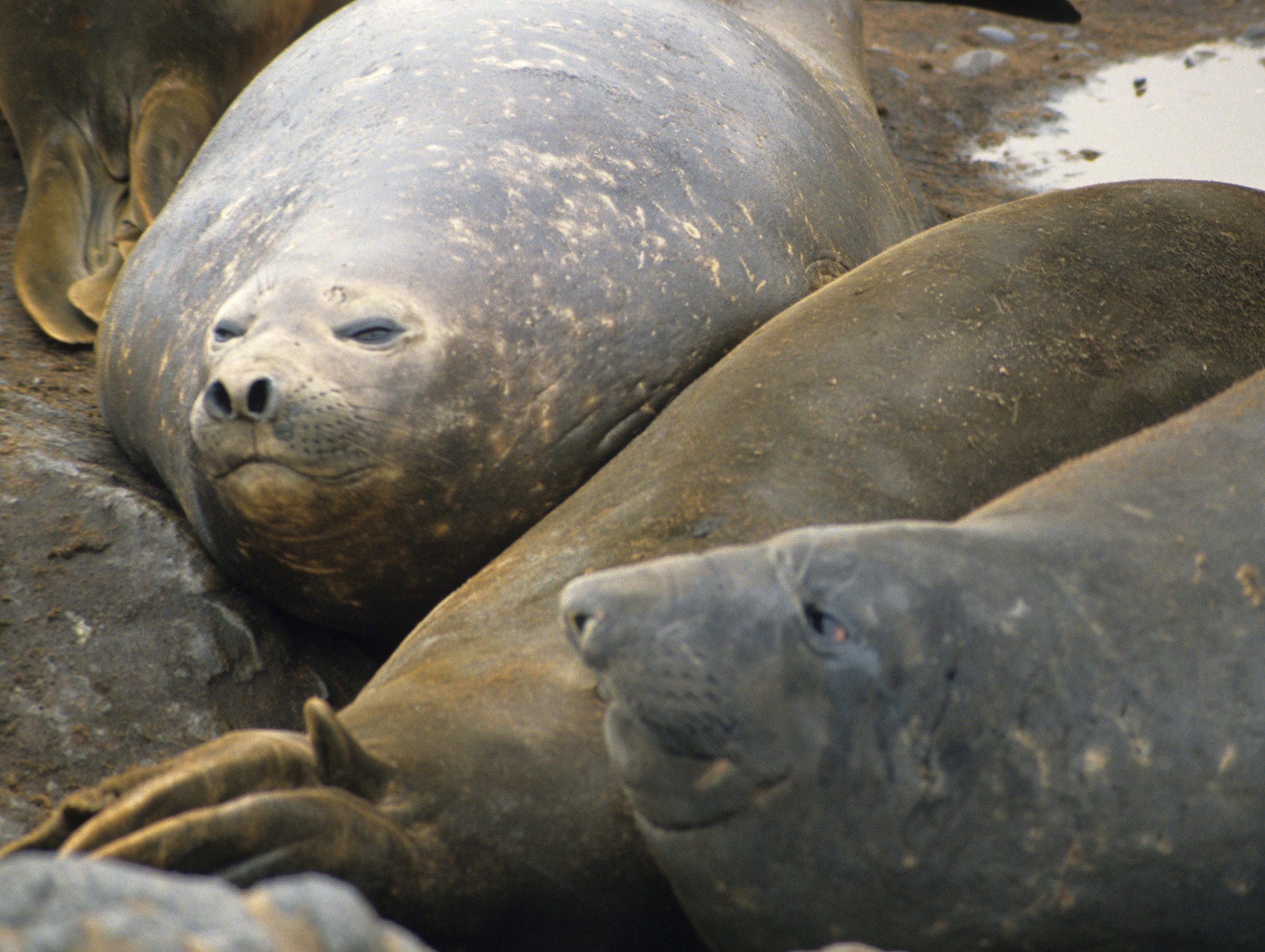
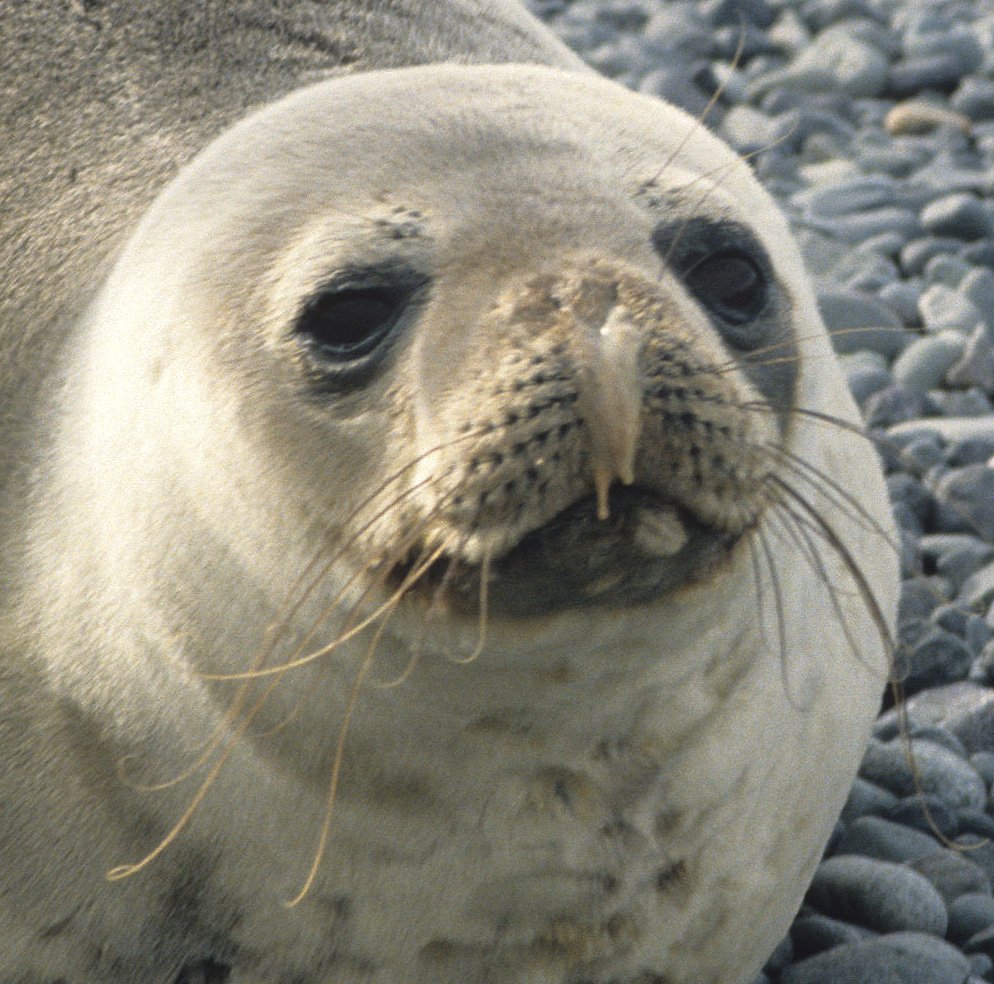
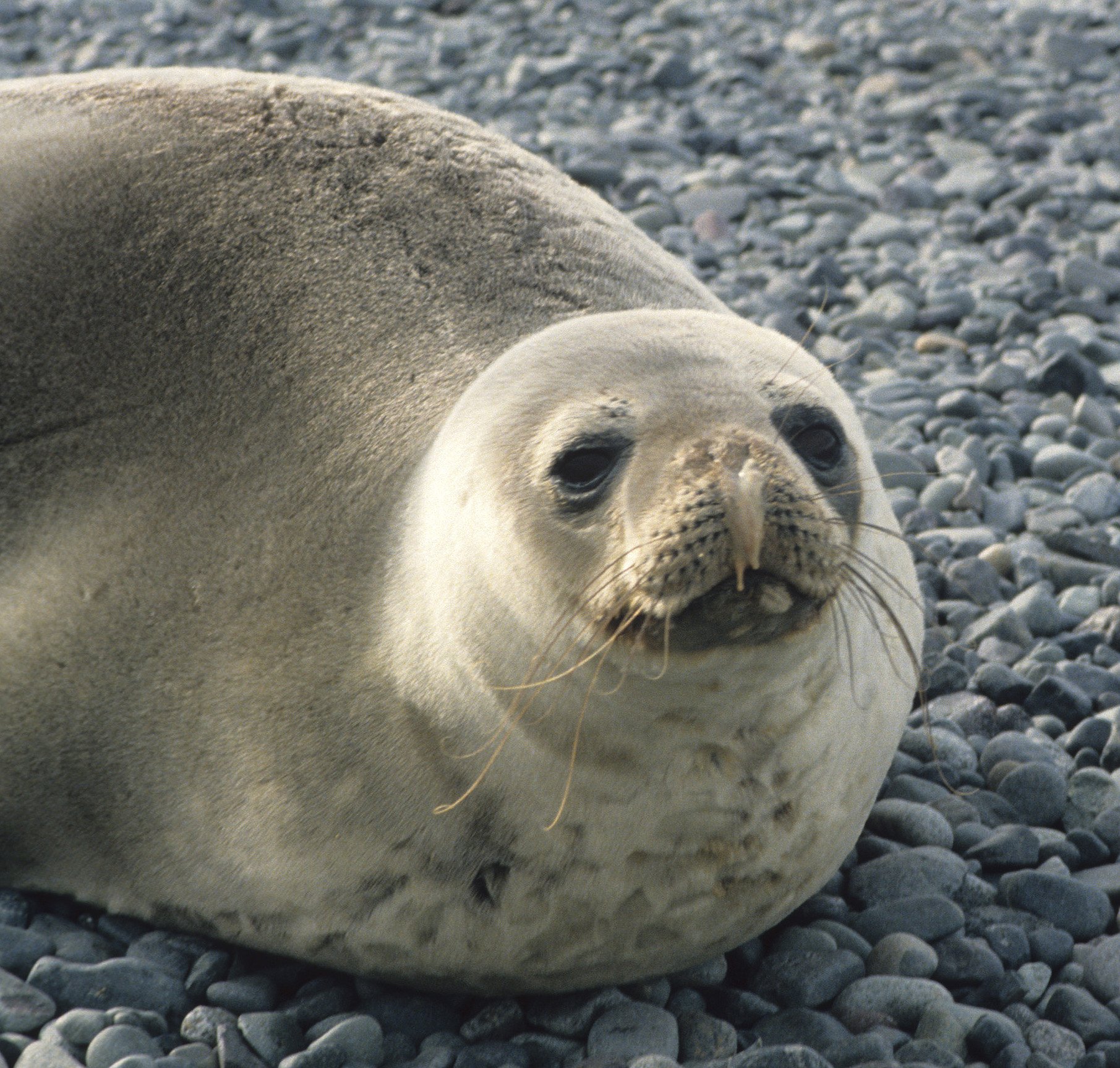
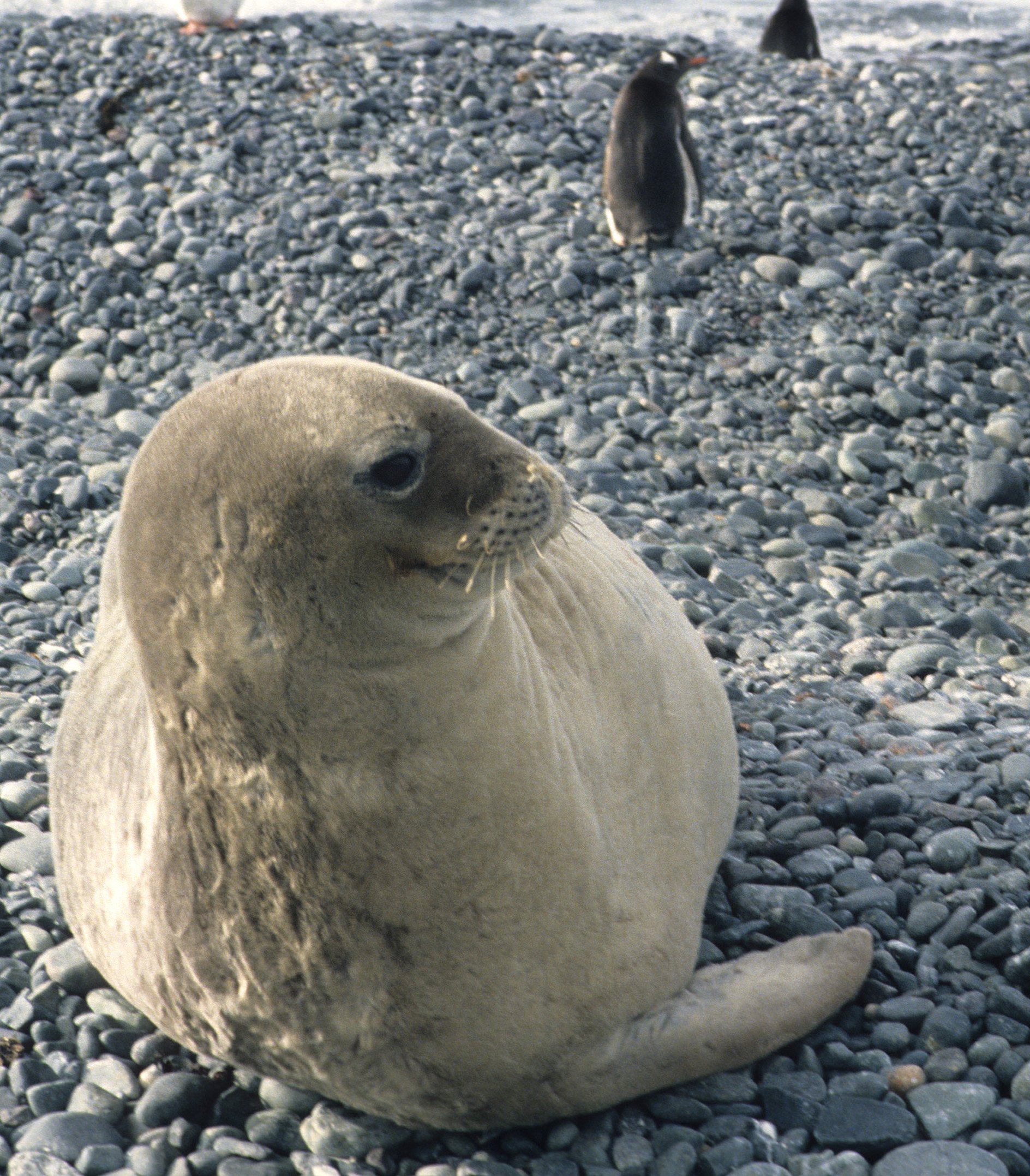
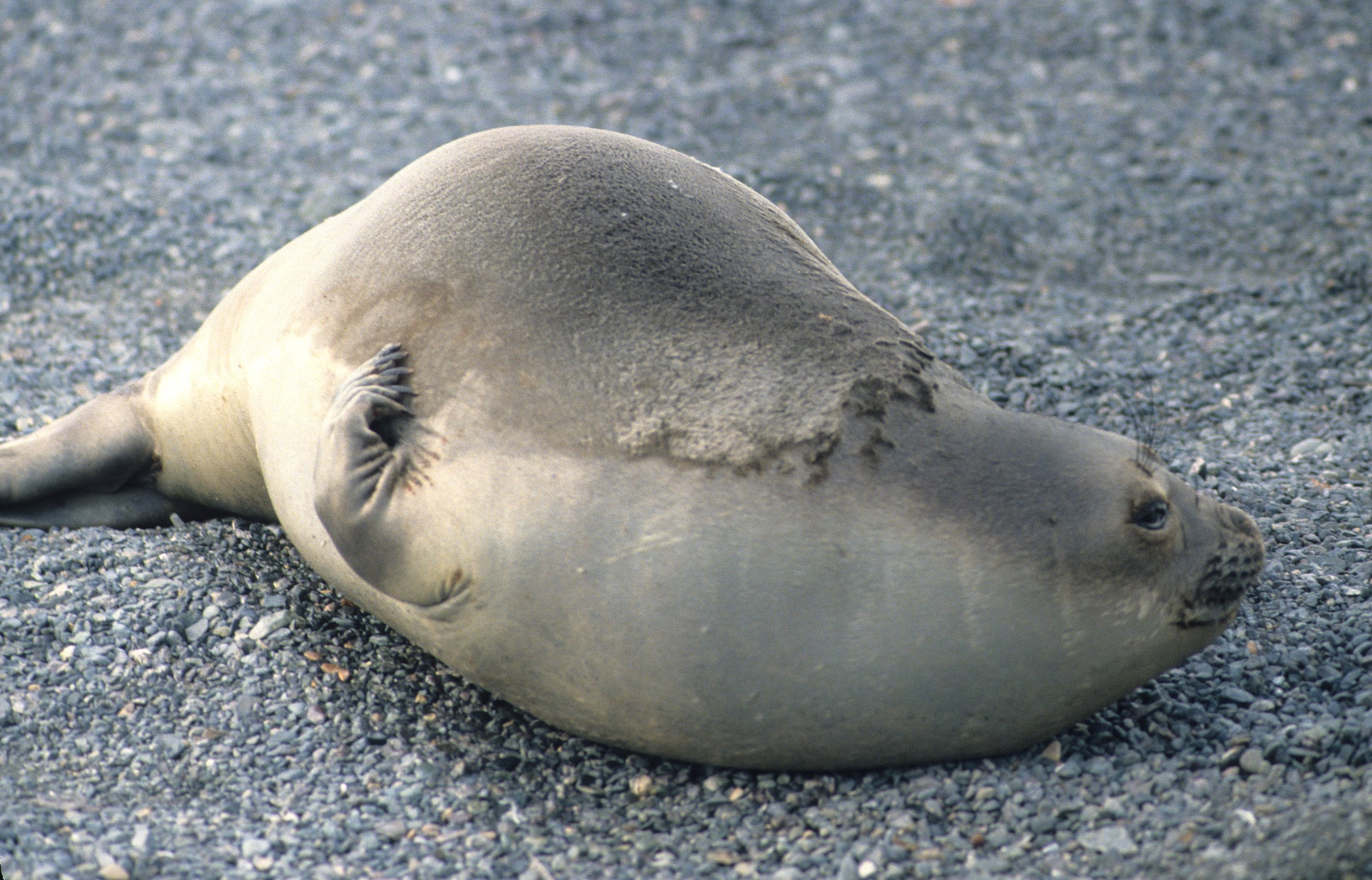

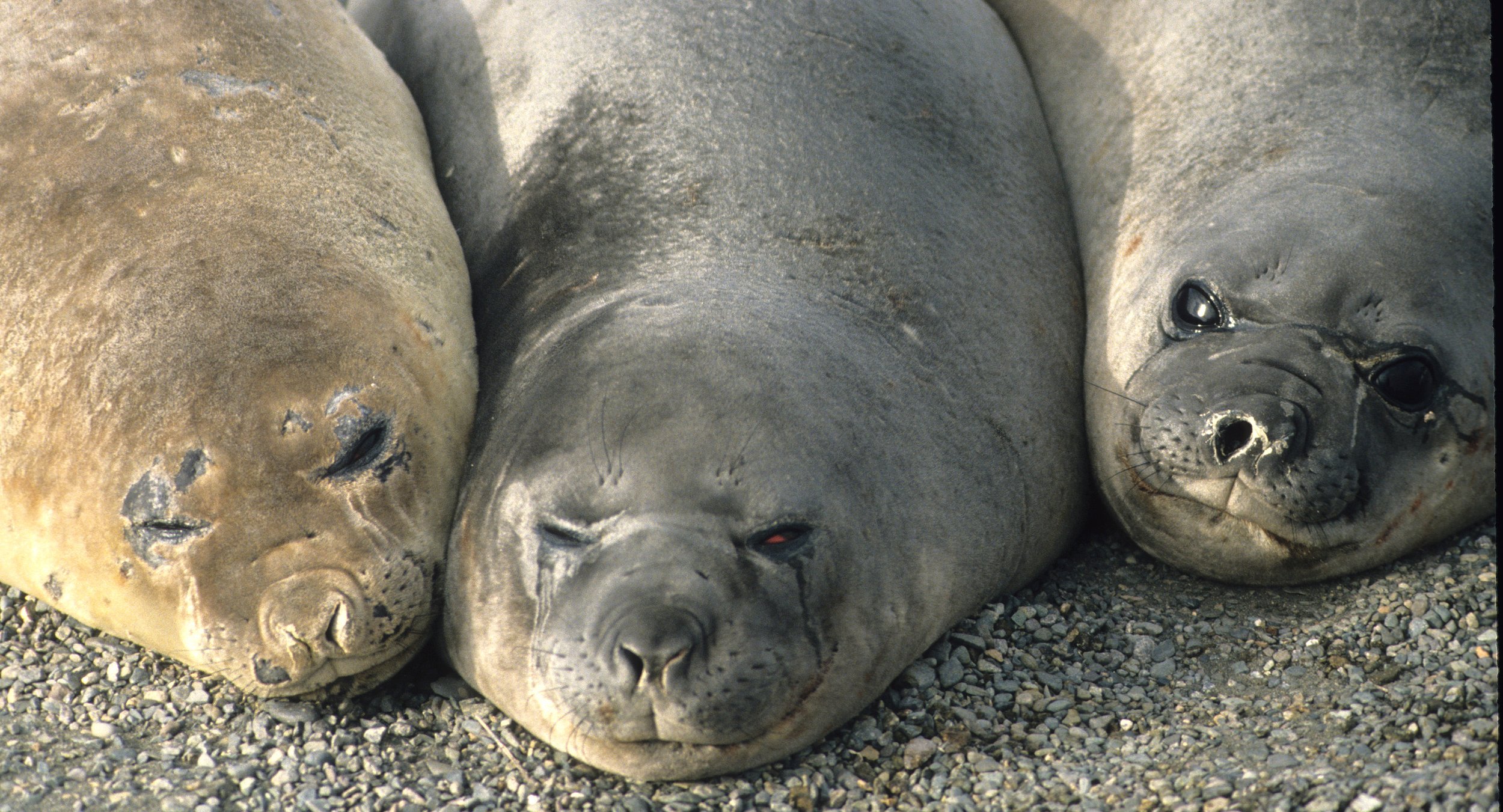
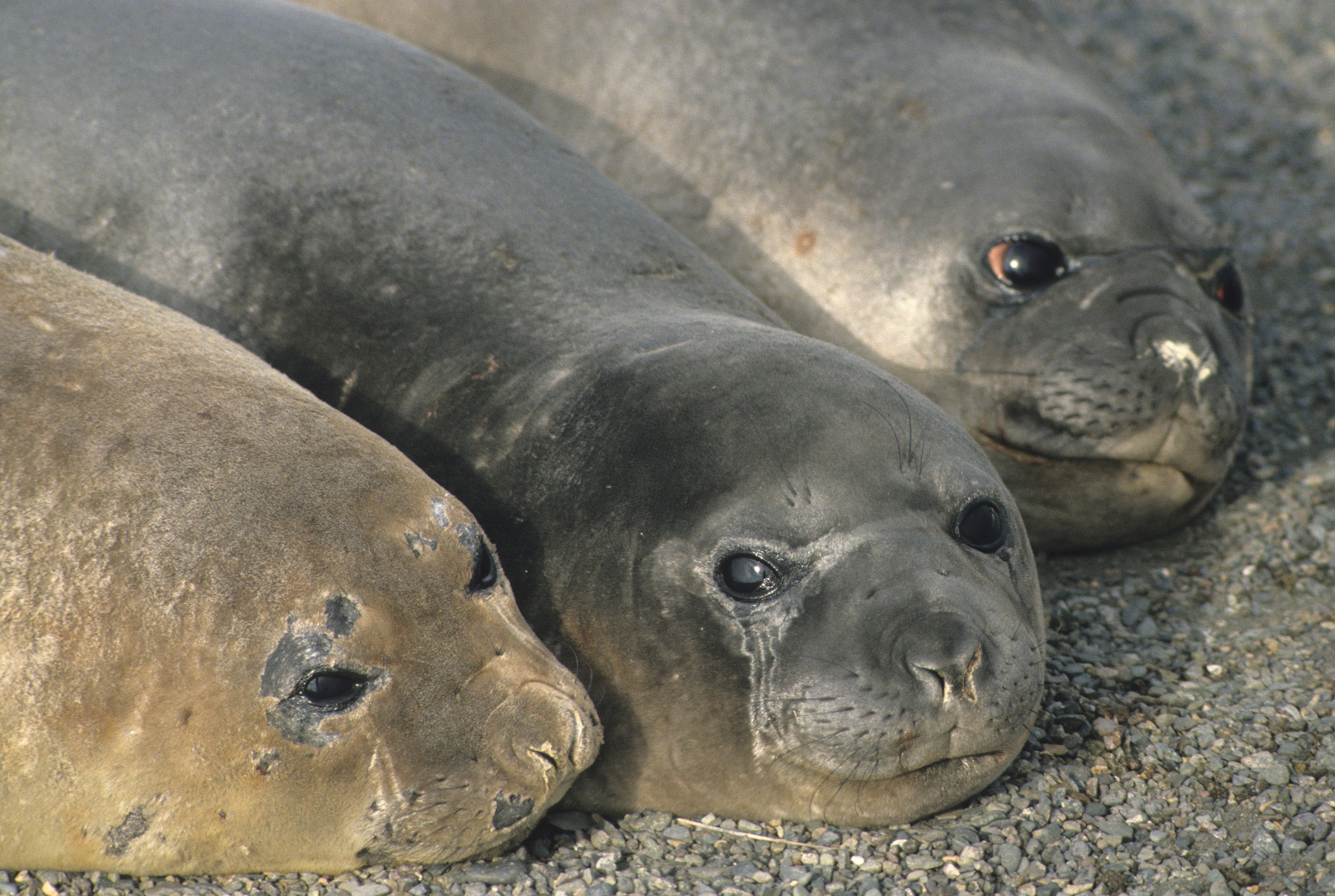
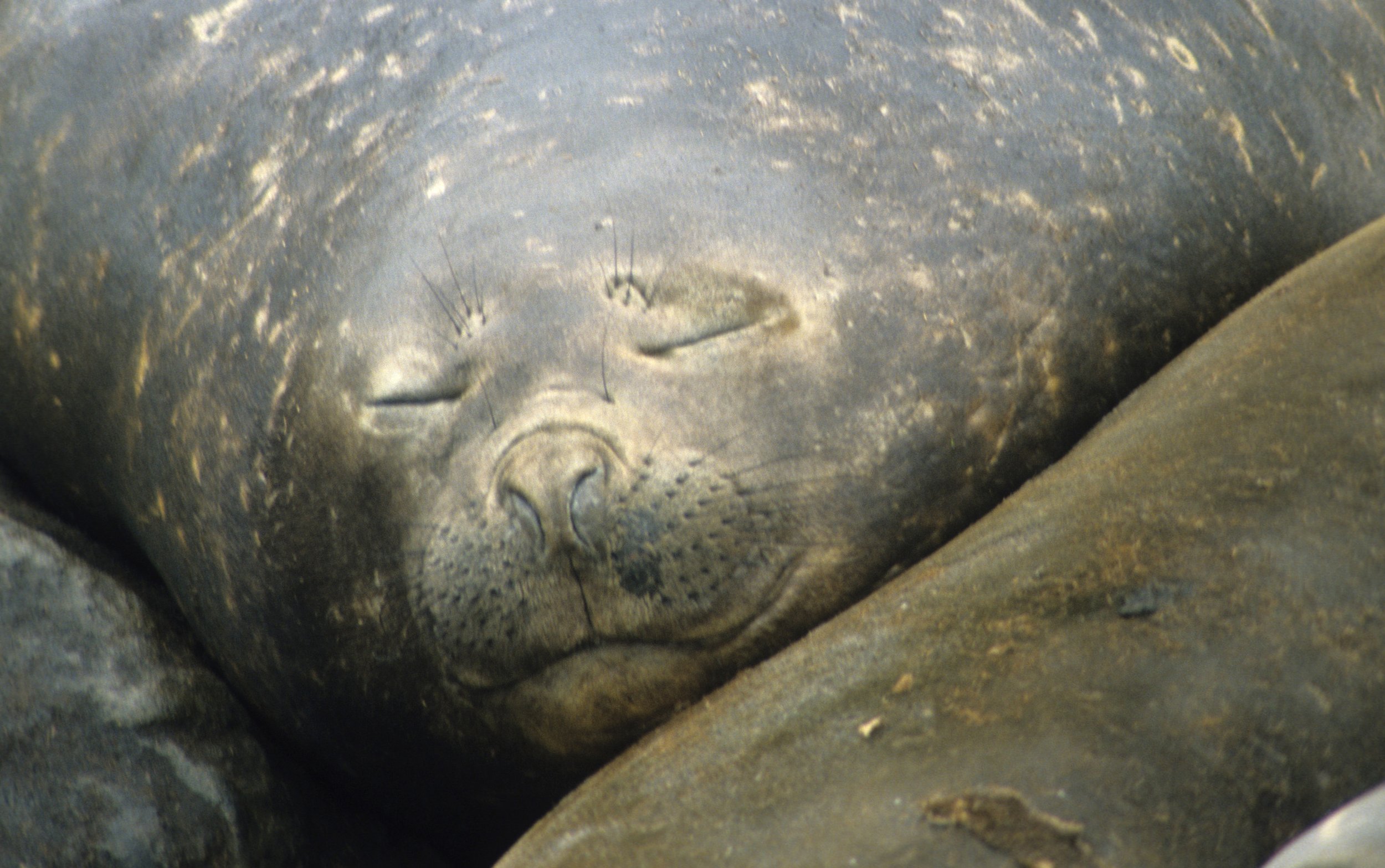
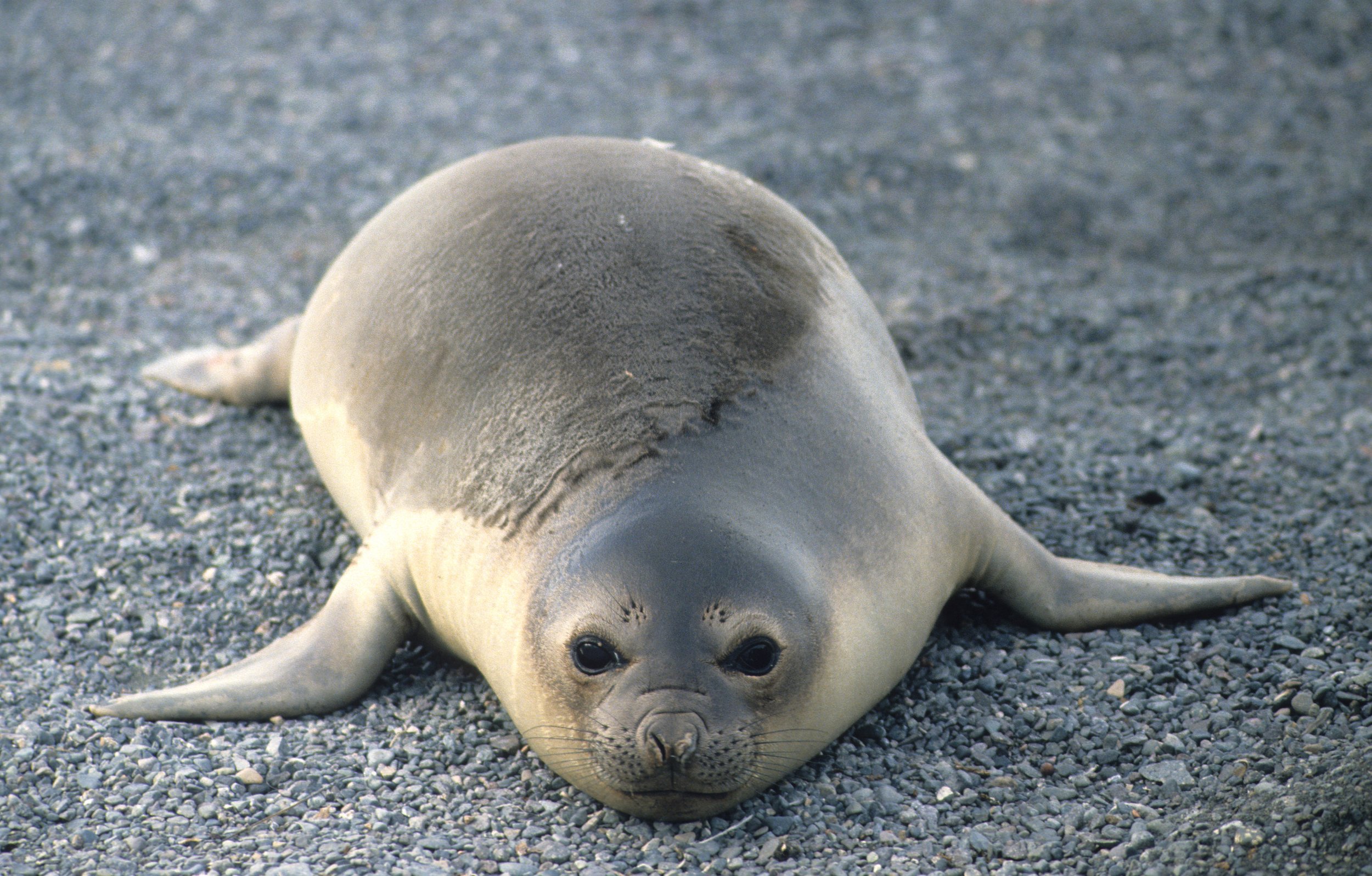
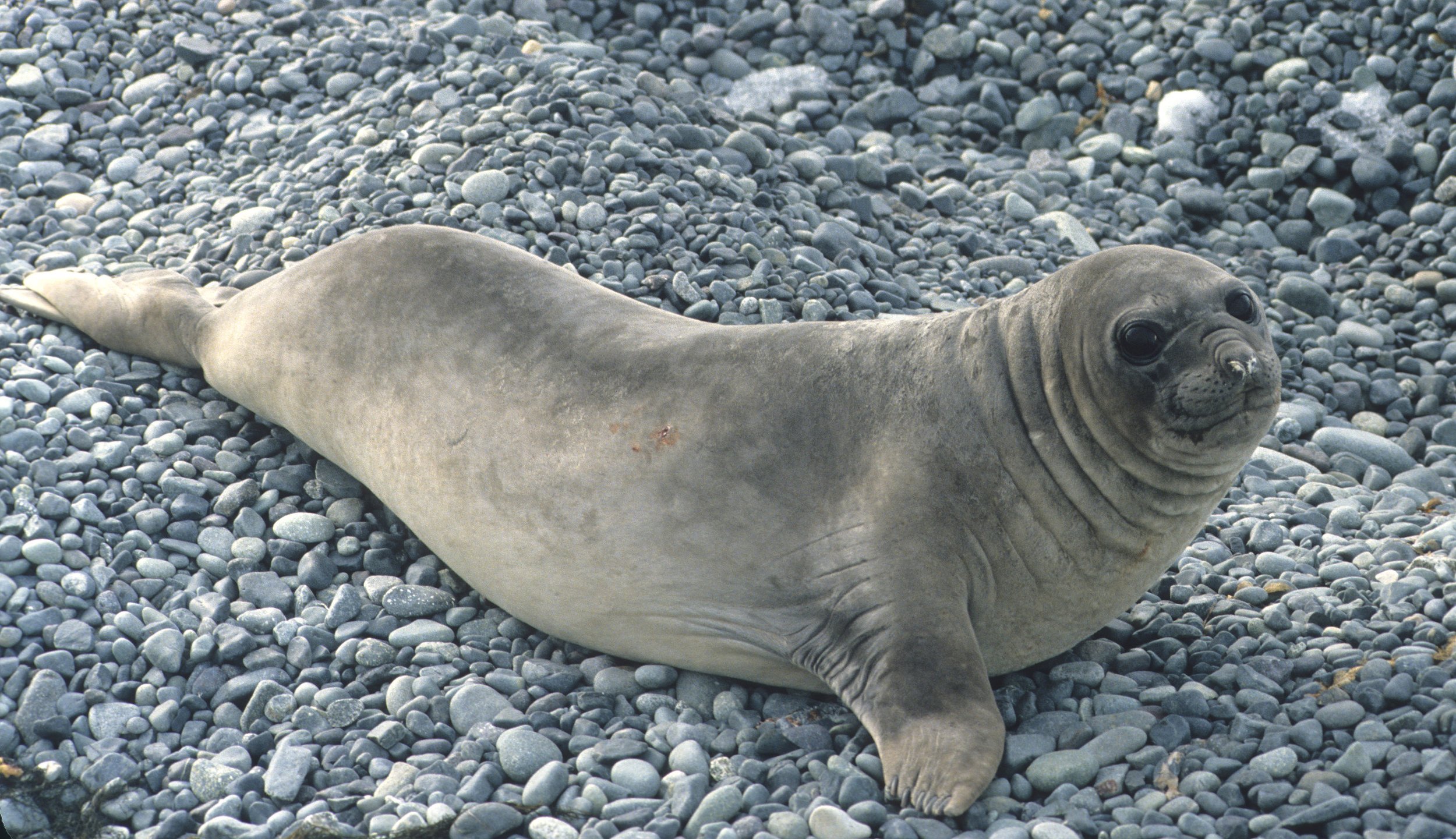
Northern Elephant Seal (Mirounga angustirostris) - Mostly California Coast



























